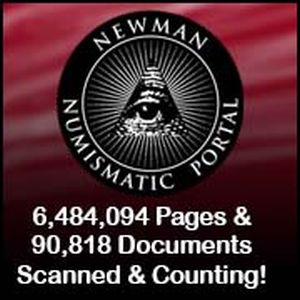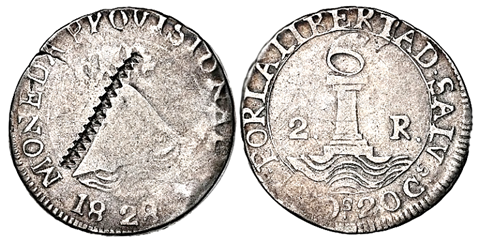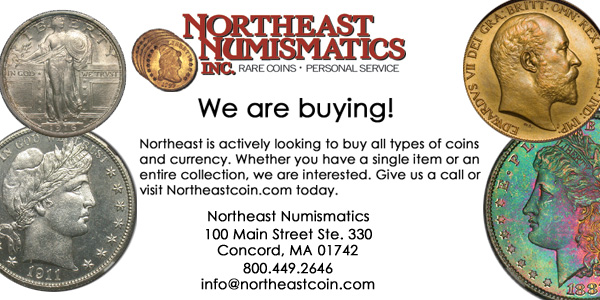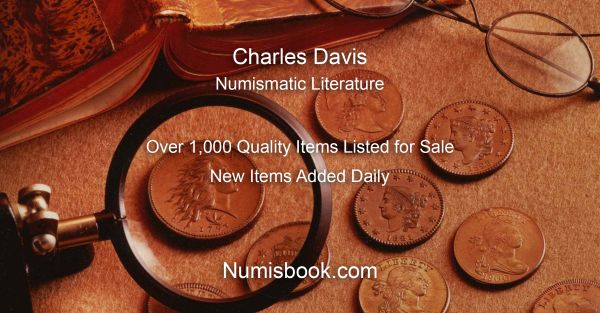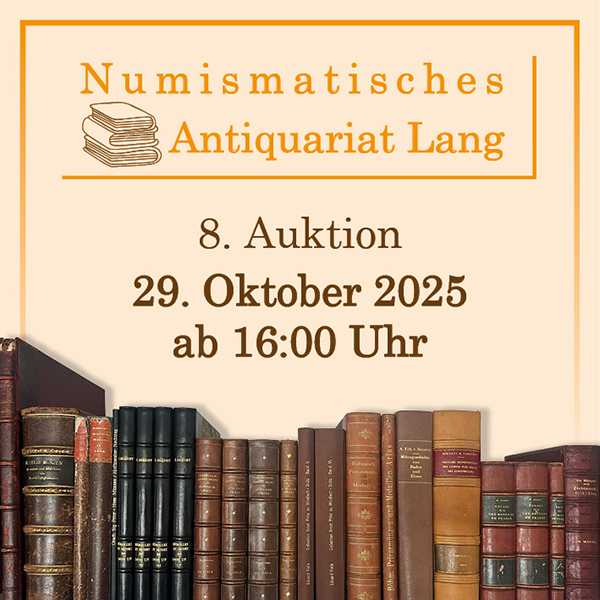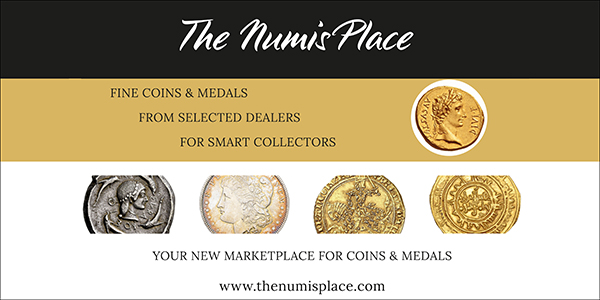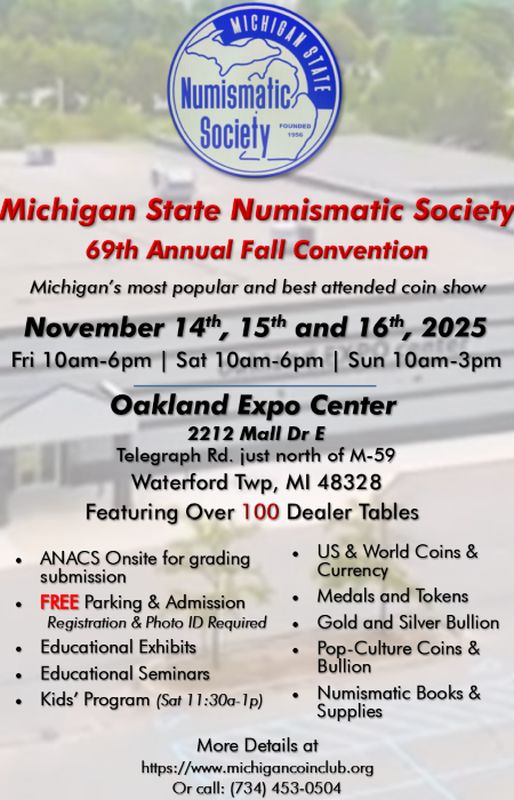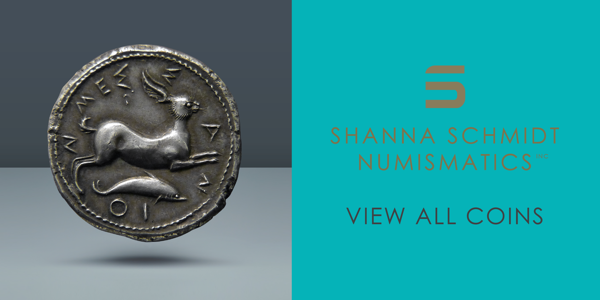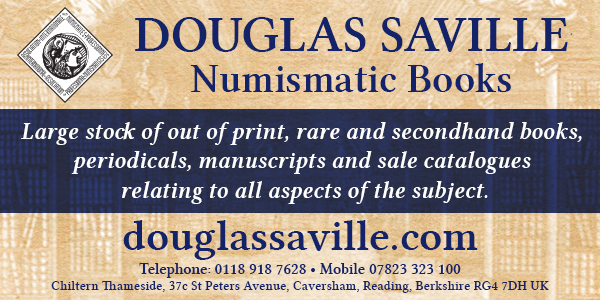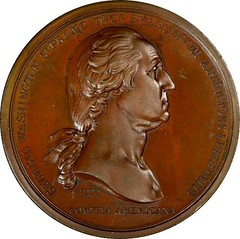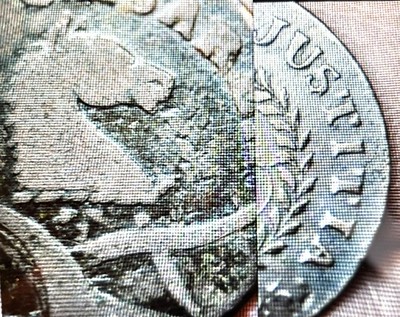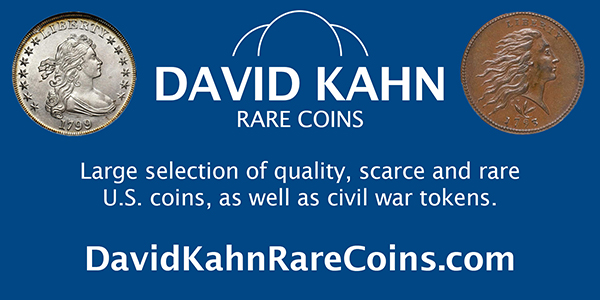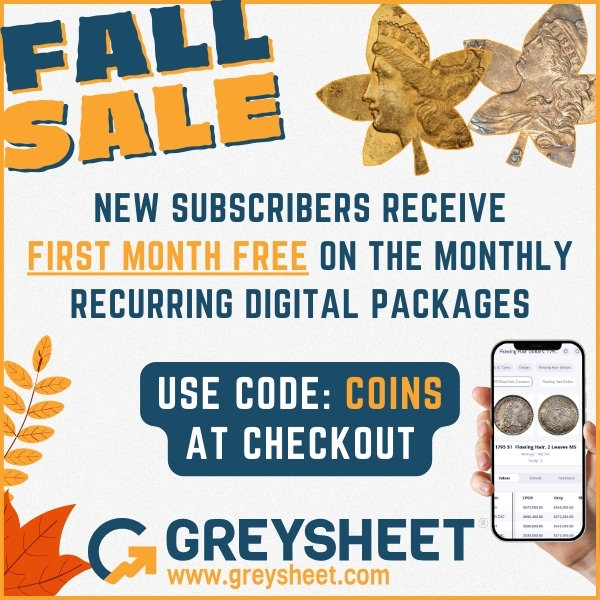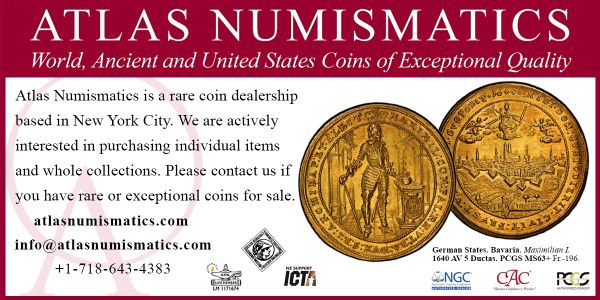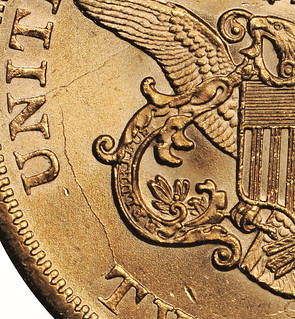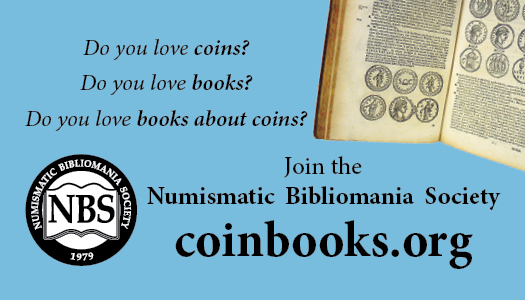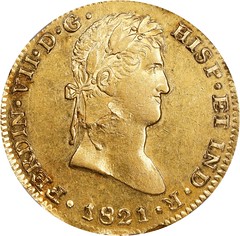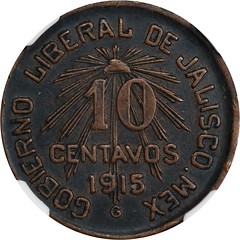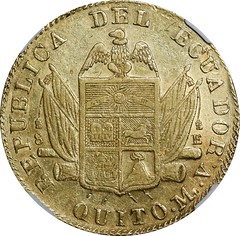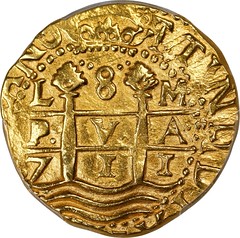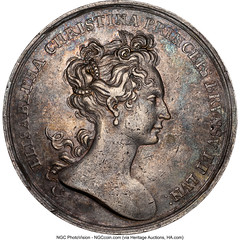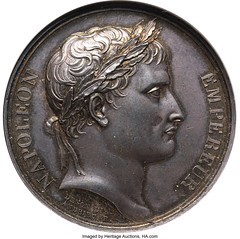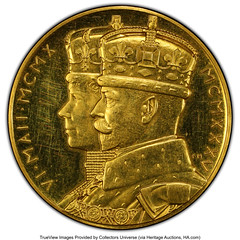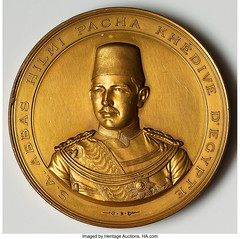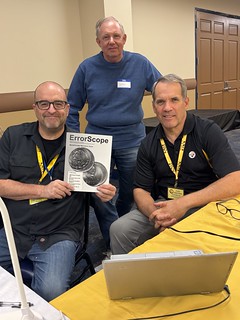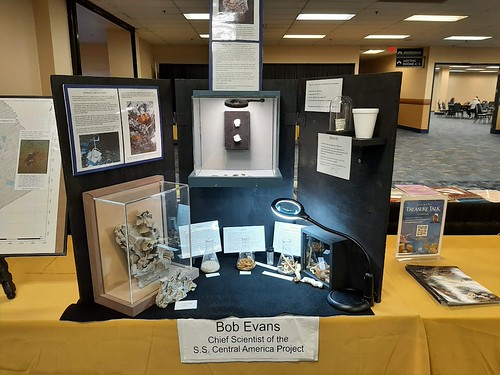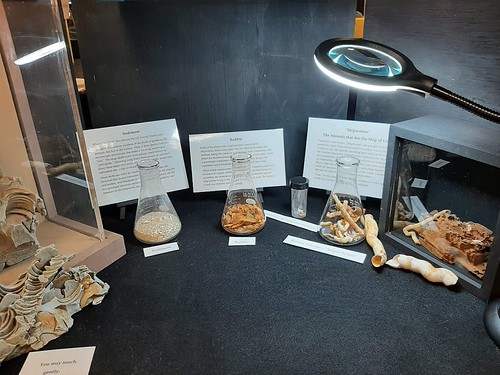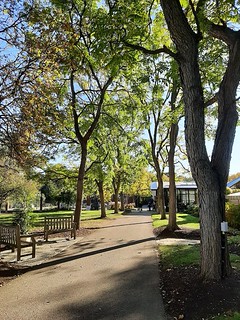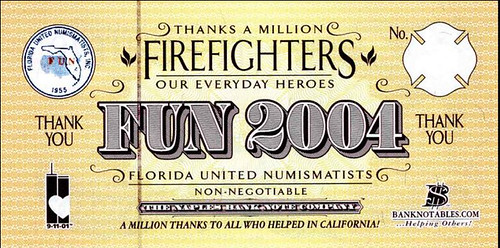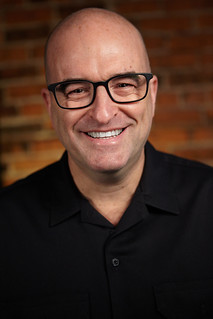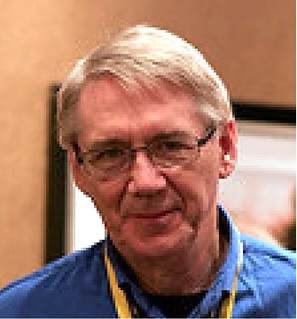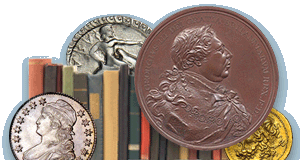
Visit our NBS Sponsors
About UsThe Numismatic Bibliomania Society is a non-profit association devoted to the study and enjoyment of numismatic literature. For more information please see our web site at coinbooks.org SubscriptionsThose wishing to become new E-Sylum subscribers can go to the following web page
Subscribe
MembershipThere is a membership application available on the web site Membership Application To join, print the application and return it with your check to the address printed on the application. Print/Digital membership is $40 to addresses in the U.S., and $60 elsewhere. A digital-only membership is available for $25. For those without web access, write to: Jeff Dickerson, Treasurer AsylumFor Asylum mailing address changes and other membership questions, contact Jeff at this email address: treasurer@coinbooks.org SubmissionsTo submit items for publication in The E-Sylum, write to the Editor at this address: whomren@gmail.com BUY THE BOOK BEFORE THE COINSale Calendar |
- WAYNE'S WORDS: THE E-SYLUM OCTOBER 19, 2025
- CHARLES DAVIS NEW NUMISMATIC LITERATURE STOCK
- LANG NUMISMATIC LITERATURE AUCTION 8 SELECTIONS
- NEW BOOK: MONEY OF THE MASSES
- NEW BOOK: COINS, RICHES, AND LANDS
- NEW BOOK: PRO RE. FESTSCHRIFT FOR BERNHARD PROKISCH
- NEW BOOK: MEDALLIONS: POLITICS AND GENEROSITY
- NEW BOOK: VICTOR HUSTER CATALOGUE RAISONNE
- PERIODICAL: ILNA DIGEST FALL 2025
- PERIODICAL: LOVE LETTER JUNE-AUGUST 2025
- PERIODICAL: SAMPLE SLAB UPDATE NEWSLETTER 44
- WORLD FOOD DAY
- VIDEO: MONEY SHOW OF THE SOUTHWEST
- NOTES FROM E-SYLUM READERS: OCTOBER 19, 2025
- QUERY: HOBART'S DENVER MINT BOOKLET
- C5 COLONIAL GROUP HOLDS OCTOBER 2025 LUNCH
- NOVEMBER 2025 WHITMAN BALTIMORE SHOW
- ANCIENT COINS DONATED TO UNIVERSITY
- VOCABULARY TERM: ROUNDED EDGE
- A NEW TYPE OF 1804 DOLLAR
- TREASURE TALK WITH BOB EVANS, EPISODE 8
- NUMISMAGRAM MEDAL SELECTIONS: OCTOBER 19, 2025
- STACK'S BOWERS: LATIN AMERICAN COINS
- HERITAGE: MEDALS AND TOKENS SHOWCASE
- WAYNE'S NUMISMATIC DIARY: OCTOBER 19, 2025
- THE EL SALVADOR ZIG-ZAG TEST MARK
- BUSINESSES ADJUST TO PENNY"S DEMISE
- 2026 MADISON COUNTY COIN CLUB MEDAL
- SYRIAN BANKNOTES TO FEATURE BRAILLE
- FUN 2004 FIREFIGHTERS EVERYDAY HEROES NOTES
- STAMP COLLECTION KERFUFFLE
- THE BIBLIOMANIA
- FEATURED WEBSITE: CASH IS FREEDOM
- ABOUT THIS ISSUE: OCTOBER 19, 2025
Content presented in The E-Sylum is not necessarily researched or independently fact-checked, and views expressed do not necessarily represent those of the Numismatic Bibliomania Society.
WAYNE'S WORDS: THE E-SYLUM OCTOBER 19, 2025
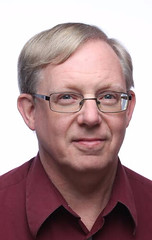 Thank you for reading The E-Sylum. If you enjoy it, please send me the email addresses of friends you think may enjoy it as well and I'll send them a subscription. Contact me at whomren@gmail.com anytime regarding your subscription, or questions, comments or suggestions about our content.
Thank you for reading The E-Sylum. If you enjoy it, please send me the email addresses of friends you think may enjoy it as well and I'll send them a subscription. Contact me at whomren@gmail.com anytime regarding your subscription, or questions, comments or suggestions about our content.
This week we open with numismatic literature sales, five new books, three periodicals, updates from the Newman Numismatic Portal, notes from readers, and more.
Other topics this week include copper coin circulation in India, medallions, medallic artist Victor Huster, sample slabs, and World Food Day.
To learn more about Baron Von Steuben medals, Hobart"s Denver Mint booklet, rounded edges, a new type of 1804 dollar replica, fixed price and auction offerings, the "Hunger Taler", numismatic "fossils", Siege Currency, and the El Salvador Zig-Zag test mark, read on. Have a great week, everyone!
Wayne Homren
Editor, The E-Sylum
CHARLES DAVIS NEW NUMISMATIC LITERATURE STOCK
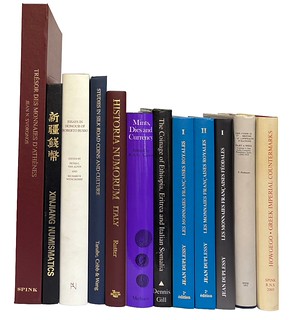 Numismatic literature dealer Charlie Davis writes:
Numismatic literature dealer Charlie Davis writes:
"We have recently purchased the book stock of a London firm that is no longer in the business of selling literature. We have listed approximately 60 titles to our Vcoins site and will be adding additional as time permits. We are generally pricing them at 20% or so less than our previous listing of the same title. We have multiple copies of many of the new titles, most that are second hand are one of a kind. We will have tables at the Manchester NH show October 23-25 and Baltimore November 5-7 and will have a selection of them at each show."
For more information, or to order, see:
http://www.Numisbook.com/
LANG NUMISMATIC LITERATURE AUCTION 8 SELECTIONS
REMINDER: The eighth numismatic literature auction from Numismatic Antiquarian Bookshop Lang closes October 29, 2025. Here are some additional selections. -Editor
We would like to remind you of our upcoming 8th auction for numismatic literature, which will take place on October 29, 2025.
You can look forward to an extensive and diverse selection: in addition to a comprehensive library on ancient numismatics, you will find numerous well-preserved works from the Middle Ages and modern times, as well as extensive series of auction catalogues.
- Details:
- Date: October 29, 2025
- Location: Online at Auex.de
- Start: 4:00 p.m. (CET)
Please remember to register in good time to participate in the auction. You can find our current PDF catalog at the link below. You can also find it on Auex.de and on our homepage.
Take this opportunity to get an overview of the diverse range of items on offer and place your favorites as advance bids.
Please do not hesitate to contact us if you have any questions.
Lot 482
Voetter, O.
Sammlung Bachofen von Echt. Römische Münzen und Medaillons. Wien 1903. 162 S., 45 Tfn. Halbleder / Half leather
Mit Exlibris "Pegan". Prachtvolles Exemplar.
Schätzpreis / Estimated price: 500 €
Lot 509
Zacos, G. / Veglery, A.
Byzantine Lead Seals. Volume One. Part One. Nos. 1 - 1095 (Imperial Seals: Vth to XVth Centuries; Non- imperial Seals: VIth to IXth Centuries). Basel 1972. XXXIV, 704 S.; Volume One. Part Two. Nos. 1096 - 2671A (Non-Imperial Seals: VIth to IXth Centuries). S. 705 - 1435; Volume One. Part Three. Nos. 2672 - 3231 (Imperial and allied Seals Vth to XIVth Centuries; Non - Imperial Seals VIth to IXth Centuries). Basel 1972. S. 1437 - 1965; Volume One. Plates. Basel 1972. 260 Tfn., davon 1 in Farbe. Dazu Zacos, G. Byzantine Lead Seals compiled and edited by John W. Nesbitt. Volume Two. Text- und Tafelband. Bern 1984 und 1985. Nos 1 - 1089. XXX, 543 Seiten; 100 Tfn. 6 Bände. Ganzleinen, etwas bestoßen / Full cloth binding, slightly worn.
Mit Besitzervermerk und Exlibris "Simon Bendall".
Schätzpreis / Estimated price: 900 €
Lot 573
Brause-Mansfeld, A.
Feld-, Noth- und Belagerungsmünzen. Teil 1 ... von Deutschland, Österreich-Ungarn, Siebenbürgen, Moldau, Dänemark, Schweden, Norwegen, Russland, Polen u.s.w. Berlin 1897; Teil 2 ... von England, Frankreich, Holland, Italien, Spanien. Berlin 1903. XI, 118 S., 55 Tfn.; VIII, 80 S., 38 Tfn. Frontispiz. Grossfolio. 2 Bände. Halbleinen, bestoßen / Half cloth, worn.
Schätzpreis / Estimated price: 950 €
Lot 1104
Christie, Manson & Woods, London.
Auktion vom 20.05.1964. The James O'Byrne Collection of Coins. Part V: Italy and The Holy Roman Empire, Etc. 315 Nrn., 17 Tfn. Liste mit Ergebnissen und Käufern.; Auktion vom 15.11.1966. Part VI: Saxony. 425 Nrn., 27 Tfn. Liste mit Ergebnissen und Käufern.; Auktion vom 04.07.1967. Part VII: Ecclesiastical Issues and European States. 455 Nrn. Liste mit Ergebnissen und Käufern. Dazu beigebunden: Auktion vom 23.07.1965. Catalogue of the collection of coins and medals (Part I) formed by the Late Alfred Morrison. 98 Nrn., 12 Tfn. Liste mit Ergebnissen und Käufern.; Auktion vom 01.03.1966. Catalogue of the collection of coins and medals (Part II) formed by the Late Alfred Morrison. Nrn. 99 - 229, Tfn. 13 - 19. Liste mit Ergebnissen und Käufern.; Auktion 13.10.1964. Catalogue of English, Foreign and important American Coins, The Property Of Major The Lord St. Oswald, M.C. removed from Nostell Priory, Wakefield, Yorkshire. 177 Nrn., 4 Tfn. Liste mit Ergebnissen und Käufern.; Glendining & Co. Ltd., London. Auktion vom 24.11.1950. Catalogue of the important collection of Greek, Roman, English and Scottish coins. Formed by the Late V.J.E. Ryan, Esq. Third Part. Ancient Greek coins. Nrn. 1378 - 1558f, 6 Tfn.; Auktion vom 20.02.1951. Fourth Part. Roman Gold coins. Nrn. 1559 - 1842, 10 Tfn.; Auktionen vom 19.07.1950 und 16.11.1950. The Important Collection of Greek, Roman Republican and Imperial, Byzantine and British Coins formed by the late Henry Platt Hall, Esq. Part I+II. Part I. Greek coins, Roman Republican coins, Imperial coins to Tiberius and Numismatic books on Greek and Roman coins. 968 Nrn., 16 Tfn. Part II: Roman Imperial coins and Byzantine series. Nrn. 969 - 2328, Tfn. 17 - 58. In einem Band gebunden. Ganzleinen / Full cloth. Collection of several catalogues, some of which include buyer lists and results.
Schätzpreis / Estimated price: 1.000 €
Lot 1135
Hamburger, L. & L., Frankfurt a.M.
Auktion 29 vom 20.01.1902 Slg. Paul Ch. Stroehlin, Genf. I. Abt. Viele Seltenheiten aller Länder. Mittelalter, Neuzeit, besonders Goldgulden. 870 Nrn., 3 Tfn. Beigeschriebene Preise und Käufer. Halbelder, bestoßen und beschabt. Handexemplar des Auktionators. Mit weiteren Informationen zu Bietern und Geboten.
Prices and buyers noted. Half leather, bumped and scuffed. Auctioneer's personal copy. With additional information on bidders and bids.
Schätzpreis / Estimated price: 350 €
For more information, see:
https://www.numismatisches-antiquariat.de/
To read the earlier E-Sylum article, see:
LANG NUMISMATIC LITERATURE AUCTION 8
(https://www.coinbooks.org/v28/esylum_v28n40a02.html)
NEW BOOK: MONEY OF THE MASSES
Kavan Ratnatunga passed along this new book on the use of small change in India. Thank you. The purchase link is for Amazon India - I was unable to find another seller. -Editor
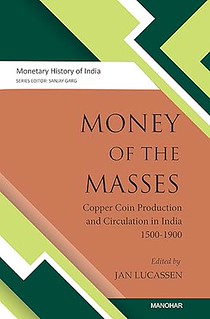 Money of the Masses: Copper Coin Production and Circulation in India, 1500-1900
Money of the Masses: Copper Coin Production and Circulation in India, 1500-1900
Jan Lucassen, Editor
Until very recently, the daily usage of coins by important parts of the population constituted an important indicator for the economic and social character of the society. Small denomination coins were produced and circulated primarily for the payment of wages, and of small purchases in market places and shops, where artisans and peasants offer their products. Frequent usage of small denomination coins thus allows us to characterise market societies as deeply monetised. This volume demonstrates that from the mid-sixteenth century Indian society was deeply monetized and in this respect it was not different from other major civilizations across Eurasia – from Western Europe via the West Asia to East Asia and back.
In order to reach these conclusions, a detailed study of the production of small denominations (mainly copper) is offered here, which will interest coin collectors and numismatists; next comes the circulation of this small change, important for monetary historians; and finally, the daily use, which points to social relations, their possibilities and restrictions, which is important for social and general historians. In addition, selections from contemporary archival records have been included in this volume which may serve as source material for future research.
About the Author
Jan Lucassen (b. 1947), the editor of this volume, is a social and economic historian with research experience in Northwestern Europe and South Asia. His main fields of interest are the history of work, of labour migration and related to this monetary history. Dr. Lucassen is a member of the Royal Netherlands Academy of Arts and Sciences (KNAW) and a fellow at the International Institute of Social History (IISH) in Amsterdam, where he founded the IISH Research Department. Sanjay Garg (b. 1965), the series editor, is an historian of international repute and has edited the first two volumes of the present series: Monetary Foundations of the Raj (2019) and The Raj and the Rajas (2022).
Publisher ? : ? Manohar Publishers & Distributors (22 September 2025)
Hardcover ? : ? 1068 pages
ISBN-10 ? : ? 9360806676
ISBN-13 ? : ? 978-9360806675
Reading age ? : ? 10 years and up
Item Weight ? : ? 1 kg 700 g
Dimensions ? : ? 23 x 16 x 7 cm
Net Quantity ? : ? 1.7 kilogram(s)
Packer ? : ? Manohar Publishers & Distributors
Generic Name ? : ? Money of the Masses: Copper Coin Production and Circulation in India, 1500-1900
For more information, or to order, see:
Money of the Masses: Copper Coin Production and Circulation in India, 1500-1900
(https://www.amazon.in/dp/9360806676/)
NEW BOOK: COINS, RICHES, AND LANDS
The American Numismatic Society library has acquired a new book on medieval coins and money. -Editor
 A collection of academic papers studying how coins, riches and lands were gained and distributed among the soldiers, warriors, and mercenaries in the Antiquity and Early Medieval times.
A collection of academic papers studying how coins, riches and lands were gained and distributed among the soldiers, warriors, and mercenaries in the Antiquity and Early Medieval times.
Land was the ideal store of wealth in the ancient Mediterranean world. It brought social respectability, and its possession allowed participation in the politics of the cities governed by landowning elites. Crucial defense of the interests of a given polity through armed services often involved the distribution of lands to laborers still not integrated in these societies. Mediterranean urban dynamics also involved paid labor and were always in need of short-contract manpower, including skilled soldiers and warriors. For short-time military services, lands were not always available so soldiers and warriors were paid with coins and riches.
Because of their superior development, urban economies in the Mediterranean were able to attract migrant paid labor. When returning home, the migrant warriors carried coins and riches that would enable them to maximize the return that a homecoming entailed. Although difficult to prove whether these men were paid in advance or when discharged, it is an important issue as it shows the strength of one contractor over another and helps to better understand the construction of statehood in ancient and early medieval times.
This collection of papers sheds light on how coins, riches, and lands were gained and distributed among soldiers, warriors, and mercenaries. Contributions cover a wide chronological span from Late Pharaonic to early medieval times, linking a well-defined core area, the Mediterranean basin, with its peripheries: Central Europe and Scandinavia to the north and the margins of the Sahara Desert and the Fertile Crescent to the south and the east.
Publisher ? : ? Oxbow Books
Publication date ? : ? January 31, 2025
Language ? : ? English
Print length ? : ? 280 pages
ISBN-10 ? : ? 1789259908
ISBN-13 ? : ? 978-1789259902
Item Weight ? : ? 2.76 pounds
Dimensions ? : ? 8.6 x 0.7 x 12.4 inches
For more information, or to order, see:
Coins, Riches, and Lands
Paying for Military Manpower in Antiquity and Early Medieval Times
(https://www.oxbowbooks.com/9781789259902/coins-riches-and-lands/)
Coins, Riches, and Lands: Paying for Military Manpower in Antiquity and Early Medieval Times
(https://www.amazon.com/Coins-Riches-Lands-Military-Antiquity/dp/1789259908)
NEW BOOK: PRO RE. FESTSCHRIFT FOR BERNHARD PROKISCH
Another new American Numismatic Society library acquisition is a collection of papers honoring the work of Dr. Bernhard Prokisch. -Editor
 The Austrian Research Society for Numismatics and the Society for Regional Studies and Monument Preservation of Upper Austria have joined forces to dedicate this Festschrift to Dr. Bernhard Prokisch on the occasion of his retirement. The title reflects one of the fundamental tenets of his professional and academic life—always PRO RE (always for the cause). The numerous and diverse contributions document his scholarly interests and work.
The Austrian Research Society for Numismatics and the Society for Regional Studies and Monument Preservation of Upper Austria have joined forces to dedicate this Festschrift to Dr. Bernhard Prokisch on the occasion of his retirement. The title reflects one of the fundamental tenets of his professional and academic life—always PRO RE (always for the cause). The numerous and diverse contributions document his scholarly interests and work.
Teachers, companions, colleagues and students of the honoree gathered for the presentation and acknowledged Bernhard Prokisch's extensive work.
The book is now available from the Austrian Research Society for Numismatics.
CONTENTS
- Foreword: Hubert Emmerig (Deputy Chairman of the Austrian Research Society for Numismatics)
- Foreword: Dominik Grundemann-Falkenberg (President of the Society for Regional Studies and Monument Preservation of Upper Austria)
- List of Publications Bernhard Prokisch
- Walter Aspernig, Inscriptions as a Substitute for Lost Documents. Three Examples from the Wels Area
- Agnes Aspetsberger – Benedikt Prokisch, The Ancient Coin Finds from the Linz Tummelplatz
- Michael Beckers, Hieronymus Megiser – an Author of Numismatic Works?
- Mika Boros, A Bohemian in the Far North
- Friedrich Buchmayr, Anton Bruckner"s Violin Teacher Franz Gruber and the Musical Life of Linz
- Petra-Maria Dallinger, Art Lovers: Johann Rint and Adalbert Stifter. Traces in correspondence, literature and the archive
-
 Hubert Emmerig, The accounts of the Aldersbach monastery (1291–1409) as a source of monetary history: The penny currencies
Hubert Emmerig, The accounts of the Aldersbach monastery (1291–1409) as a source of monetary history: The penny currencies
- Hannes Etzlstorfer, "Its appearance corresponds to its character." Snapshots from the life of Archduke Franz Ferdinand
- Katharina Fleischer – Emanuel Fleischer, "Quem Mars non potuit, Mors vicit." Noble memoria in the 17th century using the example of Johann Reichard von Starhemberg
- Heinz Gruber, Faience from Reinthal near Laakirchen attributed to Gmunden. Brightly painted cylinder jugs from the mid-19th century with a view of Lake Traunsee and the Ort castles
- Stefan Gschwendtner, Does a fortepiano have to be playable?
- Wolfgang Hahn – Andrea Luegmeyer, A – somewhat different – ??exhibition in the Linz Castle Museum 1994/95
- Johannes Hartner, Sacra Moneta – Coins in the context of sacred spaces of the Middle Ages
- Bernhard Hebert, What one thinks one sees on the Kürnberg – assumptions on the occasion of a hike
- Georg Heilingsetzer, Princely collectors around 1800: Georg Adam and Ludwig Starhemberg
- Christian Hemmers, UNESCO World Heritage Danube Limes – more than just a monument
- Alexandra Hylla, A counterfeit coin from the Hohensalzburg Fortress in Freising or Munich? New information on Bavarian pennies with a curved edge from the late 12th century
- Alice Kaltenberger, Lemons and bitter oranges – stately garden culture in Oberwallsee
- Karin Kühtreiber – Thomas Kühtreiber, A find of modern casting molds from Altmünster, Upper Austria
- Klaus Landa, Museums between continuity and innovation
- Hanna-Lisa von Lenthe, The coinage of the Hungarian magnate Karl Prince Batthyány with reference to archival sources
- Jutta Leskovar, Death and gold – on the representation of classical studies in television crime dramas
- Andrea Mayr, Precision in Miniature Format. Graphic Designs for Medals and Banknotes by the Painter and Illustrator Peter Fendi (1796–1842)
- Renate Miglbauer, A Jupiter for Ovilava
- Klaus Petermayr, Mozart's "Fuga a due Harpsichord", Weiß and Bruckner
- Max Resch, Bad Example? Carl Wilhelm Becker Influences Peter Pazmany
- Erwin M. Ruprechtsberger, The High Sanctuary on Mount Hermon in Syria/Lebanon – Stages of Exploration
- Christina Schmid, Marvellous Splendor Through Word and Image. On Karl and Katharina Wurm's mountain tours and their photographic documentation
- Julia Anna Schön – Sandra Pfistermüller, Enthroned Figures on Seals: Between Convention and Individual Representation
- Lothar Schultes, The Madonna of Schlierbach and the Viennese "Minorite Workshop"
- Wolfgang Szaivert, Roman Uhl – the founder of the "Dudlauer Gmoan." A medal and its context
- Stefan Traxler – Gerald Grabherr, Alae in Norico and the cavalry fort of Lentia in the 2nd century
- Dagmar Ulm, All sorts of people – a picture book from "the good old days"
- Klaus Vondrovec, "To the honorable administrative committee"
- Thekla Weissengruber, Coin buttons. Tradition – Costume – Imitation
- Magdalena Wieser – Michaela Zavadil, Notes of a Coin Enthusiast
- Heinz Winter, Two Coins by the Viennese Medalist Anton Scharff
- Reinhard Wolters, Was Severus Alexander Triumphant over the Persians? Numismatic Perspectives
- Bernhard Woytek, "Captive Dacians" and Writer-Like Victories: A Small Group of Unusual Denarii of Trajan
For more information, or to order, see:
Festschrift for Bernhard Prokisch
(https://numismatik.univie.ac.at/news-events/aktuelles/einzelansicht/news/festschrift-fuer-bernhard-prokisch/)
VIN 27
PRO RE. Festschrift for Bernhard Prokisch
(https://numismatik.univie.ac.at/forschung/publikationen/veroeffentlichungen-des-instituts-vin/vin27/)
THE BOOK BAZARRE
NEW BOOK: MEDALLIONS: POLITICS AND GENEROSITY
The new book Medallions: The Art of Politics and Generosity, published by Dumbarton Oaks, is available. Here's an overview and link to a PDF from the publisher's site. -Garrett
 Medallions: The Art of Politics and Generosity
Medallions: The Art of Politics and Generosity
By: Dumbarton Oaks
Medallions are among the most exquisite examples of Roman art from late antiquity surviving today. Distributed as gifts at imperial celebrations, they demonstrated an emperor"s generosity at moments of personal, political, and military triumph. Their images and inscriptions acted as propaganda to bolster the imperial regime and advertise its strength, success, and virtue. They also show us what emperors thought people expected of them. For their recipients, medallions were a mark of social status and imperial favor. Displaying medallions received from the emperor asserted one"s loyalty and place in the Roman hierarchy. As expressions of celebration and politics, favor and generosity, medallions offer us a glimpse of the intersection of art and empire at the end of the classical world.
Although they are neither medals nor coins, medallions share some features of both those objects. They were given out during great state celebrations against a backdrop of imperial pageantry. Medallions functioned as gifts, signifying imperial generosity, and as art, spreading state propaganda. Generosity was an important imperial trait, and gift giving was both a symbol of this quality and a chance to reward and bind power groups to the emperor and his family. Medallion designs, almost always featuring an imperial portrait on the obverse and a reference to an event, imperial virtue, or other family members on the reverse, were exquisite examples of the engraver"s art designed to capture the majesty of the emperor"s person and the benefits of his rule.
Under the Counts of the Sacred Largesses, Roman medallions entered a new phase. Previously, coin and medallion production had been handled by different officials, and medallions were created in a wide variety of sizes and weights. Constantine united these responsibilities under the counts, so medallions began to be struck in regular sizes based on multiples of the circulating currency and designs on elite medallions and widely circulating coins began to act as unified state propaganda. Constantine was equally innovative in his experimentation with the style and composition of the imperial portrait and the reverse designs used to express imperial power.
Thanks to Mike Markowitz for alerting us to this new exhibit catalog. -Editor
For more information, or to order, see:
Medallions: The Art of Politics and Generosity
(https://www.doaks.org/visit/museum/exhibitions/medallions)
NEW BOOK: VICTOR HUSTER CATALOGUE RAISONNE
A Catalogue Raisonné of the work of German medallic artist Victor Huster, edited by Ursula Krauss, has just been released. Here's information from the press release. -Garrett
 Catalogue Raisonné 1972 to 2025
Catalogue Raisonné 1972 to 2025
Edited By: Ursula Krauss
The catalogue raisonné comprehensively documents the work of medallist and mint master Victor Huster over more than five decades. It lists over 1,400 works and systematically records all catalogue numbers. The different stages of coin minting in particular invite closer inspection.
Each individual motif is described in detail – both obverse and reverse – including technical details such as dimensions, materials, minting process and mintage. Where possible, the illustrations are reproduced in their original diameter and convey an authentic impression of the works.
Edited by Ursula Krauss, the catalogue raisonné is an indispensable reference work for collectors, museums, art historians and lovers of medal art.
Year of publication: 2025
ISBN 978-3-00-082994-9
720 pages, hardcover, A4
Price: 80 € incl. VAT + postage
order by e-mail to
info@victor-huster.de
PERIODICAL: ILNA DIGEST FALL 2025
Bruce Perdue became the editor of the Illinois Numismatic Association's ILNA Digest in 2024. Here's the latest issue. -Editor
Bruce writes:
"I moved it from a small format magazine to a full page large magazine. The membership's response has been positive. The membership is approximately 200 hard copy and roughly 125 digital members."
TABLE OF CONTENTS
-
 Words from President: John Kent
Words from President: John Kent
- Bicentennial Silver Dollar: William Birk
- Bourse Chairman Report: Steve Harrison
- Secretary/Treasurer Report: Jim Ray
- The 1992 XXV Olympic Half Eagle : Kevin Dailey
- Affordable Proof Mercury Dimes?: Mark Benvenuto
- In Memoriam
- Treasurer Report
- Interview With Nate Leonauskas: Cam Scheirer
- Local Meetings
- Board Minutes
- Archived Article: Seated Liberty Dime
- Citizens Bank [Continued]: Lucas Alan
- Webmaster/Editor: Bruce Perdue
- Advertising & Merchandise
- Upcoming Shows
Here's an excerpt from President John Kent's column. -Editor
On a personal level, I"ve been teaching coin collecting classes at local community colleges, libraries, schools, park districts, and senior centers. It"s great outreach into the community and I"m sure some of our ILNA members have been doing the same. This year, I decided to offer 2 hour Saturday workshops for beginning and intermediate collectors at the College of DuPage and McHenry County Community College. I"ve also invited other numismatists to help with the classes and it"s my hope that they will start reaching out to their communities to provide numismatic education. Several of the students have attended local coin shows and joined coin clubs, participating in our numismatic community. ILNA is here to help you and your clubs create outreach into your local community, to provide numismatic education, and to grow your clubs membership.
Coin Collecting is getting more popular! I counted 35 members at a recent coin club meeting in Elgin, including 7 women and 3 young numismatists. We had show & tell, raffles, auction and a presentation. Please reach out to ILNA if you need ideas to help your club grow!
Congratulations on the new format, and thanks for the shout-outs to The E-Sylum and Newman Numismatic Portal. -Editor
For more information on the Illinois Numismatic Association, see:
http://www.ilnaclub.org/
PERIODICAL: LOVE LETTER JUNE-AUGUST 2025
Another recent club publication is the June/August 2025 issue of Love Letter from the Love Token Society, edited by LTS President Carol Bastable . -Editor
CONTENTS
 President"s Message
President"s Message
Carol Bastable
From the Editor"s Desk
Carol Bastable
Financial Report
Kathy Freeland
Stray Coins And Their Stories
Carol Bastable
WWI Military Themed Engraved Coin Bracelet
Gary Ascher
Interesting Coin Locket
Carol Bastable
Engraved Coins of the Night Watch
Gary Ascher
A Token of Love Book Review
Carol Bastable
Coin of the Month
Carol Bastable
The Merchant Marine in WW II
Gary Ascher
Coin Sales
Dave Jerdee
With permission, here's an excerpt from Gary Ascher's article, "WWI Military Themed Engraved Coin Bracelet." Thank you. -Editor
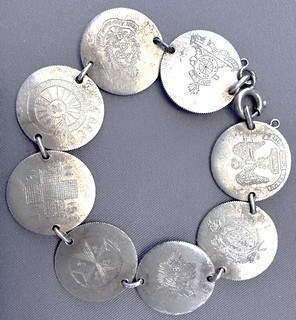 When I first spied this bracelet, I was immediately
excited as I knew that I had just discovered a bracelet
of engraved coins from WWI. As an advanced
collector of worldwide military tokens, including
British military tokens, I recognized several British
military crests.
When I first spied this bracelet, I was immediately
excited as I knew that I had just discovered a bracelet
of engraved coins from WWI. As an advanced
collector of worldwide military tokens, including
British military tokens, I recognized several British
military crests.
Often, on British military canteen tokens, the obverse prominently features a military crest, so I was very familiar with many British military crests. The seller"s description further confirmed my belief.
The bracelet is made of eight (8) silver 50 centimes French coins, connected by silver links. The coins are dated either 1916 or 1917.
All of the engravings are very intricate. The coins are relatively small, so it is hard to read all the details.
For more information on the Love Token Society, see:
http://lovetokensociety.com/
PERIODICAL: SAMPLE SLAB UPDATE NEWSLETTER 44
The Sample Slab Update is published about every two months by David Schwager. Email him at davidschwager@hotmail.com to be added to the mailing list. The October 2025 issue (#44) has been published. It's a short, 9-page affair with news on the Volume 2, third edition of the Sample Slabs book by Schwager and Burton Strauss, an article noting that "Slab Collecting Is Now Mainstream", an interview with Schwager, and Buying and Selling sections.
With permission, we're reprinting the Mainstream article, which nicely "encapsulates" the progression of new specialty areas in numismatics. -Editor
There was a time when no-one cared about mintmarks. They were tiny, insignificant details. Interest slowly grew, especially in the decades around 1900. Now mintmarks are a vital part of numismatics, as important as the date.
There was a time when no-one cared about errors. They were defective garbage, and the few people who took notice called them "freaks" and "oddities." Interest slowly grew, especially in the decades around 1960. Now errors are an important part of numismatics, giving insight into the manufacture of our favorite objects.
There was a time when no-one cared about certified coin holders. They were containers that did a simple job. Interest slowly grew, in the decades of the 21st century. Now collectible slabs, such as vintage or sample pieces, routinely appear in major auctions, in coin publications, and in dealer cases.
Part of this is a virtuous cycle in which more interest leads to higher prices, which leads to more interest, and continues. Once an item has enough value to be worth a dealer"s time, that dealer pays attention. This helps explain why so few unattributed vintage slabs still exist, and why a significant minority of dealer cases at shows hold collectible slabs at retail prices or higher. Money gets respect, and sales of four, five, and even six-figure holders command attention.
Another part of this is generational. There aren"t many slab haters left. Although you will occasionally meet one, most haters have changed their mind or died of old age. In contrast, many of us don"t remember, or barely remember, a time when certification did not exist. Newer generations of collectors, who entered the coin hobby in the precious metals boom of 2011 and pandemic boom of 2020, skew younger. These newer collectors see the coin and the holder as a combined package, with the holder sometimes more important than the coin.
The study and collecting of slabs is now similar to medals, VAMs, toners, or any other specialty. Most people won"t share your exact interest, having their own preferences, but nearly all will acknowledge your specialty as a worthwhile part of numismatics.
Slab friends, we are now mainstream.
I'm no slab hater, just indifferent. I do own some slabs today, and certainly appreciate the study and hobby of sample slabs and certified coin holders in general. To the above list I would add another hobby supply item - coin boards and folders, popularized by the late Dave Lange with his excellent books on the subjects. What specialty is next for the spotlight? Perhaps something you'll read about here in The E-Sylum. -Editor
WORLD FOOD DAY
Newman Numismatic Portal Project Coordinator Len Augsburger provided the following report on World Food Day and the United Nations Food & Agricultural Organization Money and Medal Programme. -Editor
World Food Day, October 16
The Food and Agriculture Organization (FAO) is a specialized agency of the United Nations that leads international efforts to defeat hunger. World Food Day is an international day celebrated every year worldwide on October 16 to commemorate the date of the founding of the United Nations Food and Agriculture Organization in 1945.
The FAO launched what would become the FAO Money and Medals Programme (MMP) in 1968. FAO issued collector art medals in various series to bring attention to FAO's goals and missions. This program was responsible for over a hundred medal designs issued to the collecting public. Eric P. Newman collected these pieces and over time accumulated a thick file of related materials.
Images: 1986 World Food Day medal
Link to Newman papers on the United Nations Food & Agricultural Organization Money and Medal Programme:
https://nnp.wustl.edu/library/archivedetail/543559#
VIDEO: MONEY SHOW OF THE SOUTHWEST
The David Lisot Video Library on the Newman Numismatic Portal can be found at:
https://nnp.wustl.edu/library/multimediadetail/522852
We highlight one of his videos each week in The E-Sylum. Here's one from 2009 with highlights of that year's Money Show of the Southwest Convention. -Editor
See highlights from the southwest's largest and most important coin conventions. You will see and hear a report from the show chairman, a display of proof-like Morgan dollars, news from the ANA Executive Director, and the story about a new book on Texas currency. Speaker: Edwin Johnston, Carl Schwenker, Larry Shepherd, Bob Campbell, Jim Bevill.
To watch the complete video, see:
Money Show of the Southwest Convention Highlights 2009
(https://youtu.be/KCisCICIWLU)
Money Show of the Southwest Convention Highlights 2009
(https://nnp.wustl.edu/library/book/549088)
NOTES FROM E-SYLUM READERS: OCTOBER 19, 2025
More on Carl Schwenker
Jim Sandy of the Greater Houston Coin Club writes:
"The "Video: Looking at a Dollar Bill" brought back memories of Carl Schwenker who passed away in 2024. Carl's greatest numismatic feat was his complete set of Deep Mirror Proof-like Morgan dollars. He shared these in show and tells and presentations at the Greater Houston Coin Club's meetings. Arguably the top set in the nation, he eventually sold it to become part of the Del Loy Hansen collection! So it's a bit ironic to watch him teach about the paper dollar. But he truly cared for our late president Francis Townsend.
"Francis turned around a declining club. And he asked Carl to turn around a declining Houston Money Show. For ten years Carl was the driving force in that very successful effort. Today the show funds a wide range of educational activities including multiple full scholarships to the ANA Summer Seminar each year. And the club is still growing.
"After Francis' passing, GHCC began recognizing members for major contributions to the club and numismatics with its top award. It's named the Francis Townsend Service Award. Carl and his wife Pat are past winners. That really made Carl happy."
Thanks for the additional information on Carl, his collection and service to the hobby. -Editor
To read the earlier E-Sylum article, see:
VIDEO: LOOKING AT A DOLLAR BILL
(https://www.coinbooks.org/v28/esylum_v28n41a10.html)
Justin's Stamping Stampede
Justin Perrault writes:
"The last E-Sylum addressed the "Trump Lives Here" stamp on $20 bills and the Where's George stamp.
"I have been marking $20s since earlier this year when I acquired one of the "Trump Lives Here" stamps. So far no one I have spent one with has made any comment upon receiving it. I am not tracking how many I have stamped and spent, but I estimate several hundred at this point.
"As for the Where's George bills, I've been stamping those since 1999. Not just singles either, but $2, $100 bills, and everything in between. My account summarizes that I've since entered a total of 3,150 bills comprising a face value of $20,642.
"I love the stats they provide. Here is a screenshot of the most interesting data summary."
Steadfast work! -Editor
To read the earlier E-Sylum article, see:
NOTES FROM E-SYLUM READERS: OCTOBER 12, 2025 : Another Trump Overstamp
(https://www.coinbooks.org/v28/esylum_v28n41a11.html)
Half Cent Headline Haze
Bill Eckberg writes:
"An ad showing the cover of Red Book Quarterly featuring an article entitled "Engraving a Nation: How Robert Scot"s Draped Bust Design Defined America"s Coinage" got my attention. Do we have a new analysis of Scot"s effect on subsequent coinage? I had published the cover article in the July, 2022 issue of The Numismatist entitled "The Artistry of Robert Scot." Was their article derived from mine? Or did it present new and/or better information than mine?
I had to know, so I purchased a copy.
If ever there was a numismatic article that had a misleading title, this was it. The article, with minor background information, proved to be a description of the Red Book varieties of Draped Bust half cents. Nothing whatsoever about any influence Scot might have had on other U.S. coinage.
That some of the information wasn"t even correct would be common knowledge to most students of early U.S. coins. Scot did not design or engrave the 1793 half cents; he wasn"t even on the payroll until after they were made. He also didn"t create the Draped Bust design in 1800. He created it in 1795 for the dollar; in 1796 it was used on all of the other silver coins and the cent. The half cent was the last series to feature the design.
To give credit where it is due, the cover photo of an 1805/stemless coin in UNC is quite lovely.
So, I propose an award to Greysheet for publishing an article with the most misleading title in the history of numismatics."
To read the complete article, see:
Engraving a Nation: How Robert Scot"s Draped Bust Design Defined America"s Coinage
(https://www.greysheet.com/news/story/engraving-a-nation-how-robert-scots-draped-bust-design-defined-americas-coinage)
Numismatic Scrapbook Magazine 1955-1956 Wanted
Richard Lobel of Coincraft in London writes:
"I am looking for myself for a complete set of Numismatic Scrapbook Magazine for 1955 and 1956. I started with a copy of the August 1955 issue. I was at summer camp and Murry Gould gave my father a copy to give to me. At the end of the summer it was threadbare but I loved it. So I want to buy a whole set for 1955 and 1956. Bound or unbound but I want them to bring back memories. Anything readers can do to help will be greatly appreciated."
In 2023 Greg Bennick interviewed Richard, who is originally from the Boston area, and recounted his start in numismatics in the first interview, linked below. Can anyone help? Great reason to acquire the issues! -Editor
To read the earlier E-Sylum article, see:
RICHARD LOBEL INTERVIEW, PART ONE
(https://www.coinbooks.org/v26/esylum_v26n21a08.html)
Query: Baron Von Steuben Medals
Medal Collectors of America Vice President Bob Fagaly writes:
"I recently acquired two Baron Von Steuben medals, but have been unable to find out anything about them. They are 1.5" in diameter. The dates on the reverse of the upper one (a very yellow bronze?) was associated with the bicentennial. The lower (enface) is bronze. If anybody has information about either, I"d appreciate knowing more about them."
Can anyone help? -Editor
Videos: Aluminum Patterns, 1804 Dollar Provenances
Michael Wehner of the Pacific Coast Numismatic Society writes:
Here are two new PCNS videos that may be of interest to E-Sylum readers. The two parts are related, recommended to watch part 1 followed by part 2.
Part 1: The Paradigm in Aluminum Patterns by PCNS member Douglas Ward
Part 2:Provenances of the 1804 dollar by PCNS member Douglas Ward
Thanks. Here they are. -Editor
Aluminum is a fascinating metal. In its natural, compound forms (e.g., alum and bauxite), it"s been known for centuries. However, it"s only been about 140 years that refined pure aluminum has been widely available for use. At first it was more expensive than gold or silver due to the difficulty in refining the ore. Advances in the smelting process have made it much less expensive. Aluminum has been a candidate for U.S. coinage several times, most notably in the 1860s and 1870s, when it was considerably more valuable than today.
Doug elucidates some of the history behind the famous US 1804 dollar.
For more information on the Pacific Coast Numismatic Society, see:
https://www.pcns.org/
Semiquincentennial $2.50 Coins Proposed
Vic Mason submitted these ideas for the 2026 semiquincentennial. Thanks. -Editor
Editor Larry Jewett"s piece in the 20 October 2025 edition of Coin World discusses bipartisan legislation recently submitted in the United States Congress for the United States Mint to produce two $2.50 coins next year to commemorate America"s 250th birthday. Apparently, the designs of both coins would be the same as those issued in 1926 to celebrate our 150th birthday: a female figure on the obverse symbolizing Lady Liberty and, to quote the Red Book, "holding in one hand a scroll representing the Declaration of Independence, and in the other the Torch of Freedom." The reverse displays "a representation of Independence Hall in Philadelphia."
The two 1926 issues were circulating coins: a silver half dollar and a $2.50 gold quarter eagle. It"s ironic that neither of the proposed 2026 coins can enter circulation in those two precious metals – the only forms of "money" mentioned in the US constitution – and must be produced in base metals, because of the soaring market prices of silver and gold.
Is it lack of imagination that leads to designs that copy those of a century ago? Or are we saving on production costs by not hiring designers for a new obverse and reverse?
Instead, why not use the same designs for the coins as were used by Washington and Hamilton in the 1790s? We could issue three coins dated, on the front, 1796-2026: (1) a half dollar produced in base metals for circulation; (2) a silver dollar for collectors; and, also for collectors, (3) a tenth-ounce quarter eagle for $2.50 – with all denominations inscribed on their reverses. Both small-eagle and heraldic-eagle designs could be employed on the coins.
QUERY: HOBART'S DENVER MINT BOOKLET
Roger Burdette poses an interesting question for U.S. researchers and bibliophiles. -Editor
Edwin L. Hobart"s Denver Mint Booklet
According to a letter of July 10, 1914 Denver Mint Watchman E[dwin] L. Hobart prepared a booklet describing mint processes. He intended to sell the booklet to mint visitors and had talked with the Superintendent"s personal secretary about the booklets. No one told him that employees were prohibited from selling pamphlets or souvenirs at the mint. He had 1,000 copies printed plus an advertising flyer, and was preparing to sell booklets when he was advised to get permission from mint director George Roberts.
Hobart wrote to Roberts who replied to Denver Mint Superintendent Thomas Annear that he would grant Hobart permission to sell the booklet ––
"In view of the fact which is not questioned, that Mr. Hobart was acting in good faith and
without knowledge that what he proposed to do was contrary to the rules, I am disposed to allow
him to sell the edition of 1000 copies which he has had printed on condition that the public shall
not be solicited to buy, and that the attention of visitors shall be directed to the pamphlet in an
entirely unobjectionable manner."
[RG104 E-235 Vol 403]
But the next day Roberts received one of Hobart"s advertising flyers sent anonymously,
"It illustrates that it is impossible to permit anything of this kind without causing criticism."
[RG104 E-229 Box 302. July 11,1914.]
Superintendent Annear was having none of it and quashed Hobart"s little venture.
"…I received
your letter of the 10th giving him permission to sell 1000 copies. However, I have ordered the sale
of the booklet and the giving of all circulars in connection therewith discontinued…. It seems
this is the best way…."
[RG104 E-229 Box 302. July 14,1914.]
Has anyone seen a copy of Edwin Hobart"s booklet? A few must have been sold before it was discontinued – likely to visitors from the Denver vicinity.
Great question - can anyone help? I don't recognize the Hobart name. -Editor
C5 COLONIAL GROUP HOLDS OCTOBER 2025 LUNCH
The Thursday Lunch Club has been meeting in New Jersey on an informal basis to discuss their common interest in colonial numismatics - coins, medals and paper. The group now has a formal name - Colonial Coin and Currency Club of NJ and PA (C5 for short). Congratulations! Roger Moore submitted this report on their recent meeting. -Editor
The gray heads had a meeting of C-5 (Colonial Coin and Currency Club of NJ and PA) on October 16, 2025, at the Town and Country Diner in Bordentown, NJ. In attendance from left to right around the table were: Leo Shane, Ray Williams, Bill Liatys, Wayne Shelby, Mike Brooks, John Louis, Don Hartman, Roger Siboni, and Roger Moore. After a brief period of exchanging condolences on our latest medical challenges, we moved on to showing interesting coins, etc.
The talk was non-stop, showcasing many treasures. Luckily, there weren't too many other diners because the noise levels reached pretty high decibel ranges. Roger Siboni blew everyone away with his magnificent Washington Before Boston medal. The details and the depth of strike were exceptional, as was the size of the medal. I must add, the photo doesn"t do this medal justice.
Ray Williams had a Lion Dollar that was passed around to obtain opinions about a very enigmatic date. Was this a double strike error, some sort of odd damage, or a blunder by the engraver? Most agreed that a drunk engraver was the most likely cause.
Roger Moore was given leniency for showing a non-numismatic item—a Danish bayonet sold to the British, for use during the French & Indian War, and available to the Patriots during the War of Independence. Though hand-to-hand conflict is rarely considered during the Revolution, it was often necessary since reloading a flintlock rifle was a slow and cumbersome process, especially when an enemy was charging. Tomahawks were also widely used.
Wayne Shelby brought a New Jersey variety 34-J (Deer Head) with a Nova Constellatio copper undertype. This is evidently the only 34-J with that undertype presently unknown.
Leo Shane also brought a non-numismatic object – a 12-pound British cannonball - along with some great currency. It was mostly used by the British navy with cannons positioned on the main decks of their warships. The arrow mark indented into the cannonball indicates it to be of British origin.
Both Bill Liatys and Mike Brooks shared large collections of colonial currency. Bill had just had all his notes slabbed, and Mike had a collection he had just received from a friend to sell. John Louis showed a large collection of coins and artifacts he had metal-detected, and Don Hartman provided an update on his ongoing project of gathering metal-detected New Jersey coins, which is now almost at 2000. The discussions simmered down for a short period when the food arrived, but returned to the high decibel levels once plates were removed. The discussions went on for three hours until stern looks from our waiter finally made us leave. However, everyone stated how much they were looking forward to the C4 Annual Meeting in a few weeks.
C4 is short for the Colonial Coin Collectors Club, which will be holding their annual convention in conjunction with the upcoming Whitman Baltimore Winter Expo. -Editor
For more information on the Colonial Coin Collectors Club, see:
https://colonialcoins.org/
To read an earlier E-Sylum article, see:
THURSDAY LUNCH CLUB REPORT APRIL, 2024
(https://www.coinbooks.org/v27/esylum_v27n15a17.html)
NOVEMBER 2025 WHITMAN BALTIMORE SHOW
The Whitman Expo returns to Baltimore from November 6–8, 2025. Here is the press release. -Garrett
Whitman Expos™ proudly announces the return of the Winter Coin Expo, taking place November 6–8, 2025, at the Baltimore Convention Center. Recognized as one of the leading coin and collectibles expos in North America, the Whitman Expos Winter Coin Expo consistently draws collectors, dealers, and enthusiasts from across the country for three exciting days of buying, selling, trading, and discovery.
Open to the public with free admission (photo ID required), the Expo offers a welcoming environment for seasoned collectors, families, and newcomers alike. From valuable rarities to everyday treasures, visitors will explore an unparalleled selection of coins, paper money, and collectibles guided by independent dealers and numismatic experts.
Auctions and Special Features
Stack's Bowers Galleries, the renowned numismatic dealer founded in 1933, and who held its first auction sale in October 1935, will display lots from their upcoming Showcase Auction, the Official Auction of Whitman Expos, as well as highlights from future sales. A newly discovered specimen of the 1804 dollar, the "King of American Coins" with a pre-sale estimate of $4-5 million, will be on view, along with other historic and valuable properties including:
- Two of the largest United States gold coins ever made, the famous Gold Rush-era $50 slug, and the rare octagonal 1915 $50 gold coin that commemorated it.
- The faceplate of a gold ingot from the California Gold Rush, salvaged from an 1857 shipwreck and whose original weight would have contained over $1 million worth of gold at today's prices.
- Historic Maryland paper money, including issues from local banks and the rare 1775 "Gunpowder" note that was Maryland's first Revolutionary money ever.
- Rare Maryland colonial coins struck in the 1600 and 1700s.
- Historic American medals, including a medal made in 1801 for presentation to Indian chiefs by Lewis and Clark and another given to a pilot who saved Antarctic explorers in 1935.
- An example of the first American silver dollar worth more than $3 million, and a very rare 1969-S Doubled Die Obverse cent found in a bag of cents, that is worth $20,000.
On Friday, November 7 from 12 p.m. to 2 p.m. Dr. Fred Bart and Bianca Bart authors of United States Paper Money Errors, 5th Edition, will host a book signing at Booth #135. The newly revised and expanded reference—now in full color—includes more than 550 photos, detailed grading and pricing information, the Friedberg Numbering System™, rarity guides, and exclusive data on production errors within the Bureau of Engraving and Printing. Copies will be available for purchase at the show.
Adding to the excitement, the United States Mint will feature several special releases and collectibles at its booth during the Whitman Expo including:
- The 2025 Limited Edition Silver Proof Set, releasing on November 6, the opening day of the show. This set presents a meticulously crafted collection of this year"s proof strikes in fine silver.
- The Comic Art One Ounce Silver Medal – Superman™, part of the groundbreaking Comic Art Coin and Medal Program. Celebrating comic art as a uniquely American art form, this medal features Superman™ and Clark Kent™ as enduring symbols of hope, justice, and strength. With its distinct matte finish, the Man of Tomorrow™ comes brilliantly rendered in fine silver.
- The United States Marine Corps 250th Anniversary Commemorative Coin Program, on sale only in 2025. This historic program honors the Marines and their 250 years of service, sacrifice, and defense of the nation.
- The 250th Anniversary United States Navy American Eagle One Ounce Silver Proof Coin, crafted at the United States Mint at San Francisco with a special United States Navy emblem privy mark honoring the 250th anniversary of the United States Navy.
Family-Friendly Activities
Whitman Expos Winter Coin Expo"s commitment to inspiring the next generation of collectors continues with a lineup of fun and free youth activities for children ages 6–12. Young hobbyists will enjoy events including:
- Fill Your Album – Kids receive a coin album and search for dates to complete
- Coin Grab – Treasure-seekers reach into a chest filled with valuable coins to take home.
- Coin Coloring – Young artists express themselves with coin-themed art activities.
- Goodie Bags – Every child receives a special bag of collectibles provided by generous Expo dealers.
- Interactive Workshop for Scouts – Pre-registration is required for a Saturday coin workshop for scouts.
These hands-on experiences are designed to spark curiosity, encourage hobby education, and create lasting family memories around coin collecting.
"The Whitman Expos Winter Coin Expo is more than just a marketplace — it"s a celebration of numismatics and the community that surrounds it," said Lori Kraft, General Manager of Whitman Expos. "Whether you are a lifelong collector, an investor, or a family just starting to explore the hobby, there"s something here for everyone. We are excited to welcome attendees to Baltimore this fall."
Show Hours and Admission
Public Hours (FREE Admission with photo ID):
- Thursday, November 6 – 12:00 p.m. to 6:00 p.m.
- Friday, November 7 – 10:00 a.m. to 6:00 p.m.
- Saturday, November 8 – 10:00 a.m. to 5:00 p.m.
Early Bird Admission ($100 fee):
- Thursday, November 6 – 10:00 a.m. entry
- Friday, November 7 – 9:00 a.m. entry
- Saturday, November 8 – 9:00 a.m. entry
For a full schedule of events and more information on the Whitman Expos Winter Coin Expo, visit expo.whitman.com.
About Whitman Expos
Whitman Expos is a premier organizer of coin and collectible shows across the United States, with a longstanding tradition of connecting numismatic enthusiasts, collectors, and the general public to the fascinating world of coin collecting. Founded on principles of education, community engagement, and passion for history, Whitman Expos offers a unique platform where novices and experts alike can buy, sell, and trade treasured pieces, while also diving deep into the stories they tell. Each event, meticulously curated and hosted in major cities, features an array of activities, expert dealers, and rare collections, ensuring a comprehensive and enriching experience for all attendees. Learn more at expo.whitman.com.
ANCIENT COINS DONATED TO UNIVERSITY
New York physician David Menchell donated 38 ancient coins to University of Massachusetts at Lowell for use in classes, including History Assistant Professor Jane Sancinito's classes. -Garrett
At the end of a talk for the American Numismatic Society on using coins in the classroom, History Assistant Professor Jane Sancinito made an appeal to collectors who find fakes mixed in with real coins they have bought at auction.
"Please remember your local universities," Sancinito said. "Many of us would love to have replicas that we could bring into classrooms and hand to students, because replicas are usually the right weight, they"re the right size, and they have all the decoration of the originals."
Shortly after the virtual talk Sancinito gave last March, David Menchell, a New York physician and serious collector who teaches workshops on coins and medals, sent her a reproduction set of ancient Roman coins. He followed up with an offer to buy the university genuine coins for study – and asked Sancinito what she wanted.
Once she got over her shock, Sancinito, who does research on the Roman Empire in the third century, asked for some coins from that period. She also told Menchell it would be "awesome" if the collection included some coins from a group found together at a single archaeological site, known as a "hoard."
In August, the first 38 coins – 37 Roman and one Greek – arrived to form the core of the Dr. David Menchell Coin Collection, now in the special collections section of O"Leary Library. It includes bronze and silver coins from the third century B.C.E. (Before Common Era) to the third century C.E. (Common Era) and includes most of the well-known Roman emperors.
It also includes six Roman denarii from the Little Busby Hoard, a group of 392 silver coins that were buried in the early 200s in Yorkshire, England. The coins in the Menchell Collection were issued under different Roman emperors between 140 C.E. and 180 C.E.
 Sancinito, who teaches courses including Ancient Greek History, Roman History and Civilization, World History to 1500 and Pirates of the Mediterranean, is already using the coins in her classes. Through the Emerging Scholars Program, she also engages with one student each year in more intensive research into ancient coins.
Sancinito, who teaches courses including Ancient Greek History, Roman History and Civilization, World History to 1500 and Pirates of the Mediterranean, is already using the coins in her classes. Through the Emerging Scholars Program, she also engages with one student each year in more intensive research into ancient coins.
Brandon Bulman, a sophomore history major studying Greek history with Sancinito this fall, says it"s "pretty cool" to get to handle and inspect coins from the collection.
"It"s weird to think that people hundreds and hundreds of years ago used them, and now they"re here," he says.
To read the complete article, see:
Ancient Coins Donated to University by Collector
(https://www.uml.edu/news/stories/2025/ancient-coins.aspx)
VOCABULARY TERM: ROUNDED EDGE
Here's another entry from Dick Johnson's Encyclopedia of Coin and Medal Terminology. -Editor
Rounded Edge. The edge of a medallic item without sharp corners forming an arc between the two sides. Small medals can be diestruck with such an edge, but generally these are turned on a lathe to remove the corner angles. Although the rounded edge is somewhat more pleasing to the eye, such edge treatment does make the medal more difficult to hold and handle with human fingers. It should never be done on a medal larger than four-inch diameter. See edge, polished edge.
In one case a two-inch medal was diestruck with a rounded edge: American Protective Tariff League Essay Medal of 1892. It was produced by Whiting Manufacturing Company of Rhode Island, a company noted for manufacturing tableware. They employed the same technique in producing the edge of the medal as the firm was accustomed in applying edges to silverware.
To read the complete entry on the Newman Numismatic Portal, see:
Rounded Edge
(https://nnp.wustl.edu/library/dictionarydetail/516686)
A NEW TYPE OF 1804 DOLLAR
E-Sylum Feature Writer and American Numismatic Biographies author Pete Smith submitted this article suggesting a new term for a type of 1804 dollar replica. Thank you. -Editor
I ended my article last week with a list of terms for the 1804 dollars. This week I will propose a new term.
Three items sold on eBay last week that got my attention. They were listed under the title of "1804 UNITED STATES LIBERTY TRADE DOLLAR RARE SILVER COIN." The three listings used the same photos and same PCGS certification numbers. The PCGS type number is not valid. The serial number was assigned to an MS-69 Silver Eagle.
Two of these sold on October 8 with the third selling on October 9. Each sold for $9.99 which is probably a fair price considering the cost of production in China. If it was silver, the melt value would be around $45.
The stated grade of MS70+ makes a mockery of American grading standards and the piece is in violation of the 1973 Hobby Protection Act. I am going to call it a "Parody" 1804 dollar. No one should take the coin or holder seriously.
I am amused by the "thumbs-up" symbol over the QR code on the reverse. This should reassure a prospective buyer that they are getting a genuine illegal copy of a restrike of a fantasy in a fake slab.
Over the past two weeks I have looked at hundreds of images of 1804 dollar replicas. I am working to make a photo gallery showing known examples. This past weekend I dug deeper into the unmarked copies that are in violation of the 1973 Hobby Protection Act. What I found are not copies produced before the act but rather examples being currently offered.
I will refer to the seller of the MS70+ dollars as "Chinese eBay seller A." In the last three months he has sold about twenty unmarked replicas on eBay. Fourteen of these are the same die variety but I did not immediately note they are from the same seller because he used different photos. Most of these sold for $2.99 and $3.99. That variety has two noticeable cut marks on the shield. Initially I thought these were all copies of one coin. I now believe that marks are in the die and appear on many copies including those sold in the MS70+ holders.
The shield with cuts appears on four reverse dies. One is mated with three different obverse dies. The other three appear with different obverses. This probably says something about the way Chinese dies are made, but I am not an expert in this area.
Chinese eBay seller A has no current listings for 1804 dollars. Enter Chinese eBay seller B with an 1804 dollar currently listed. The photo is the exact same photo used by Seller A for coins sold August 29 and September 15. I wonder if this is the same seller using a different name or another seller borrowing the image to sell a coin they don"t have.
This piece is the only unmarked copy of an 1804 dollar offered on eBay on October 14, 2025. The listing was posted on September 12, 2025.
While seller A has no current listing for an 1804 dollar, they do have a "1951 UNITED STATES LIBERTY TRADE DOLLAR RARE SILVER COIN." The photo shows a 1951 Franklin Half. They have many other listings for what appear to be Chinese unmarked counterfeits sold below melt.
I will also mention Chinese eBay seller C who sold an 1804 dollar on August 4 for $.99. The listing uses the same exact title as seller A. The photo has a similar format but is a different coin.
In addition to the unmarked copies, I found an offering that appeared to have the word "COPY" printed in black on the photograph. It did not appear to me impressed in the coin. The ads are often deceptive using photos of coins other than what will be delivered and may have false descriptions for size and weight.
While it is easy to pick on Chinese eBay offers, there are at least two domestic mail order firms offering the same unmarked replicas for less than twenty dollars. I won"t name them.
I am attempting to identify die varieties for the unmarked 1804 dollar replicas. So far I can identify eleven different obverses with nine different Class III reverses. In contrast, I only found one copy with a Class I reverse.
I approached this with the idea that unmarked replicas had been produced prior to 1973. It now appears that they are all recent products produced in China. They are sold openly by dealers in this country.
I also found thirty-two different examples of marked copies of 1804 dollars. These are in the form of replicas, fantasies, one-ounce rounds, two-ounce rounds and novelties. There is an active market for legal copies as well as illegal copies.
I am not looking into the historical background of counterfeit 1804 dollars. My remarks represent a moment in time and just report on what I found available in early October 2025.
To read the earlier E-Sylum articles, see:
1804 DOLLAR STORIES
(https://www.coinbooks.org/v28/esylum_v28n40a14.html)
1804 DOLLAR FAKES AND REPLICAS
(https://www.coinbooks.org/v28/esylum_v28n41a17.html)
1804 DOLLAR OFFERED ON EBAY
(https://www.coinbooks.org/v28/esylum_v28n41a18.html)
TREASURE TALK WITH BOB EVANS, EPISODE 8
In January, our good friend Bob Evans began publishing a series of blog articles on the Finest Known website detailing his experience as co-discoverer and curator of the treasures recovered from the wreck of the S.S. Central America. Subject of the book "Ship of Gold", many exhibits, countless interviews and articles, books and auction catalogs feature the legendary haul of gold coins, bars, nuggets, gold dust and more from the 1857 shipwreck. Here's another excerpt - see the complete article online. -Editor
 Almost all the SSCA gold was stained, encrusted, or even enclosed with rust and limestone. These minerals were stable only where they formed, at the bottom of the ocean. Once brought into different conditions at the surface they became unstable and began to flake and spall off gold coins and ingots in unattractive ways.
Almost all the SSCA gold was stained, encrusted, or even enclosed with rust and limestone. These minerals were stable only where they formed, at the bottom of the ocean. Once brought into different conditions at the surface they became unstable and began to flake and spall off gold coins and ingots in unattractive ways.
So, the decision was made to remove all the unstable minerals obscuring the beautiful gold, except in a very few instances. This also allowed the coins to be third-party graded and encapsulated, and for the ingots to be handled without a rusty mess ending up on the handlers" skin and clothing.
The rust and limestone are surface deposits, a physical deposit, not chemically bonded with the gold surface. I removed all the minerals I judged to be unstable.
In the very few instances I mentioned, the rust was massive, stable enough, and with a strong enough physical adherence to the coin surface that it was not inclined to fall off with normal handling.
 So, there are a few pieces out there in "as-found" condition, or nearly so, with just the "strongest" minerals remaining.
So, there are a few pieces out there in "as-found" condition, or nearly so, with just the "strongest" minerals remaining.
Coins are very detailed, and the rust found its way into the smallest surface features, the hair details, the inside spaces in letters, even into the microscopic striations in the rubbing resulting from circulation. In fact, rust would flake off fresh mint-state gold more readily than off circulated pieces. My curatorial procedure meant that I finished each coin immersed in solution under a stereoscopic dissecting microscope, the very same scope you see pictured here on my lab bench at sea in 1989.
I love discoveries. I grew up identifying birds and fossils, with each such identification being a discovery, an understanding, and a personal gratification. This continued as the greatest lost treasure in United States history passed through my care. I am a student of the history of science and exploration as well as a participant, and I am keenly aware of the enormous opportunity for discovery afforded to me by my "first look" and "first detailed look," at sea and in the lab, as the curator of this wonderful treasure. Like Howard Carter peeking through the crack between the stones and into Tut"s tomb for the first time, I saw "wonderful things."
I carry a loupe or have one in my mobile-backpack-office at all reasonable times. (See Treasure Talk Episode 3 – Part 2, where the Miami Herald headlined me as a "Nerd.") But for serious journeys into the deeper messages carried by coins, I prefer examination with a microscope, to have the piece sitting still while I think about the meaning of this or that strange mark, die crack, or erosion from re-working and polishing the dies. My scope (both that old Nikon and my current unit) have "zoom" functions, where you can virtually fly down closer and have a good look, up to 50x magnification. For most assessment of manufacturing details, 20x is enough.
Bob goes on to discuss a number of interesting varieties and die cracks found in his closer examination of coins found of the SS Central America. See the complete article for more, including Bob's personal encounter with Miss Liberty herself. -Editor
To read the complete article, see:
Treasure Talk: Episode 8
The Dazzle is in the Details
(https://finestknown.com/treasure-talk-episode-8the-dazzle-is-in-the-details/)
For the complete series, see:
Category Archives: Treasure Talk with Bob Evans
(https://finestknown.com/treasure-talk-with-bob-evans/)
To read the earlier E-Sylum article, see:
TREASURE TALK WITH BOB EVANS, EPISODE 1
(https://www.coinbooks.org/v28/esylum_v28n12a12.html)
TREASURE TALK WITH BOB EVANS, EPISODE 2.1
(https://www.coinbooks.org/v28/esylum_v28n13a17.html)
TREASURE TALK WITH BOB EVANS, EPISODE 2.2
(https://www.coinbooks.org/v28/esylum_v28n14a15.html)
TREASURE TALK WITH BOB EVANS, EPISODE 3.1
(https://www.coinbooks.org/v28/esylum_v28n15a16.html)
TREASURE TALK WITH BOB EVANS, EPISODE 3.2
(https://www.coinbooks.org/v28/esylum_v28n17a16.html)
TREASURE TALK WITH BOB EVANS, EPISODE 4.1
(https://www.coinbooks.org/v28/esylum_v28n18a13.html)
TREASURE TALK WITH BOB EVANS, EPISODE 4.2
(https://www.coinbooks.org/v28/esylum_v28n19a20.html)
TREASURE TALK WITH BOB EVANS, EPISODE 5.1
(https://www.coinbooks.org/v28/esylum_v28n22a13.html)
TREASURE TALK WITH BOB EVANS, EPISODE 5.2
(https://www.coinbooks.org/v28/esylum_v28n23a16.html)
TREASURE TALK WITH BOB EVANS, EPISODE 6.1
(https://www.coinbooks.org/v28/esylum_v28n27a14.html)
TREASURE TALK WITH BOB EVANS, EPISODE 6.2
(https://www.coinbooks.org/v28/esylum_v28n30a21.html)
TREASURE TALK WITH BOB EVANS, EPISODE 7.1
(https://www.coinbooks.org/v28/esylum_v28n32a16.html)
TREASURE TALK WITH BOB EVANS, EPISODE 7.2
(https://www.coinbooks.org/v28/esylum_v28n40a15.html)
NUMISMAGRAM MEDAL SELECTIONS: OCTOBER 19, 2025
Numismagram's Jeremy Bostwick sent along these four medals from his most recent upload of spooky material material to his site. For all of the new items, please visit https://www.numismagram.com/inventory. -Garrett
102717 | NETHERLANDS. Amsterdam. Surgeon's Guild cast brass Toegangspenning (Admission Token). Issued 1654, and used for the passing of the surgeon's exam/admission to the medicinal garden (45mm, 29.30 g, 12h). Skeleton (Grim Reaper) standing facing, holding scythe and resting hand upon hourglass on base to right; flowers at feet // Civic coat-of-arms of Amsterdam; below, field left blank for engraving; all set upon decorative cartouche, with skull at the bottom. Edge: Plain. Koning p. 46, 6.2; Dirks I.5.7; cf. Brettauer 5198. About Uncirculated. Brassy-olive surfaces, with a few stains noted near the rims. A rare and interesting medicina in nummis type. Compare to a similar example (also unengraved) that realized a total of $2,640 in the Stack's Bowers October 2021 CCO (lot 72539). $1,965.
The obverse of this type—featuring a figure of Death along with an hourglass—is an allusion to the transient nature of life and, as such, a memento mori. It was used in Amsterdam as a token of one's membership into the guild of surgeons. Meanwhile, the reverse refers to the city herself, which was home to a medicinal garden—the so-called hortus medicus—which housed various flora that could be used medicinally. Following the fallout of the plagues that had gripped Europe, along with portions of the rest of the world, the understanding and cultivation of plant-based remedies began to take form, with this garden serving in that role. The bearer of such a token would also have access to these grounds to make use of the plants grown.
To read the complete item description, see:
102717 | NETHERLANDS. Amsterdam. Surgeon's Guild cast brass Toegangspenning (Admission Token).
(https://www.numismagram.com/product-page/102717)
102857 | GREAT BRITAIN. Anti-Republican Sympathies white metal Medal. Issued 1795. "A cure for ills" (48mm, 54.19 g, 12h). By W. Whitley. THE LAND WE LIVE IN AND MAY THOSE WHO DON'T LIKE IT LEAVE IT, GOD SAVE THE KING, crown above; below, domestic scene, with father holding tankard and playing with two children, while a mother is at a spinning wheel, and another child prepares a dinner table; all within wreath // A PHILOSOPHICAL CURE FOR ALL EVILS / LICENTIOUS LIBERTY IS DESTRUCTION / ABHOR EVIL CLEAVE TO THAT WHICH IS GOOD, decapitated French aristocrat standing left, pointing downward to left at his severed head; around, the severed heads of others, still bleeding from their necks, are attached to a rope, forming a wreath-like border; to inner right, the Devil, with horns, wings, and a pointed tale, urges on the aristocrat. Edge: Plain. BHM 407; Eimer 869. PCGS SP-55. Some very subtle rub on the high points, but otherwise full of enchanting brilliance and quite attractive given the metal. Rare, especially this appealing. $695.
The execution of Louis XVI was an inflection point in European politics, and came just after the American colonies successfully achieved their independence. In the United Kingdom, partisans to the monarchy saw this "licentious liberty" exhibited to the south in France as abhorrent, with the still-recent loss of her aforementioned American colonies also making emotions run high. This sentiment comes through rather strongly on the medal here, which is essentially the late 18th century example of "if you don't like it, you can get out!"
To read the complete item description, see:
102857 | GREAT BRITAIN. Anti-Republican Sympathies white metal Medal.
(https://www.numismagram.com/product-page/102857)
102556 | GERMANY. Johann Friedrich Blumenbach bronze Medal. Issued circa 1825-1845. Commemorating the Jubilee of the Anthropologist's Doctorate (50mm, 68.90 g, 12h). By Heinrich Gube for Gottfried Bernhard Loos in Berlin. I FR BLUMENBACH NATO GOTHAE D 11 MAII 1752 DOCT CREATO GOTTINGAE D 19 SEPT 1775, bust left // NATURAE INTERPRETI OSSA LOQUI IUBENTI PHYSIOSOPHILI GERMANICI D 19 SEPT 1825, three human skulls, as classified by Blumenbach: Caucasian, Ethiopian, and Mongolian. Edge: Plain. Storer 398; Brettauer 125. PCGS MS-63. Deep glossy red-brown surfaces. An ever-interesting and haunting type. $795.
Blumenbach was an anthropologist from the University of Göttingen and specialized in the study and classification of human skulls from around the world—later known as craniometry. At the time of his death, he owned 245 whole skulls and fragments, along with two mummies. The term ‘caucasian" as a descriptor of race was also derived from him, as his influential use of it in 1795 quickly caught on in scientific circles.
This medal would have likely been commissioned by close family, friends, and/or colleagues of Blumenbach in celebration of the jubilee of his doctorate, as such practice was very much en vogue. Rather than commissioning a portrait, for example, which would exist singularly and in a fixed position, a medal, in contrast, could be made in a small quantity across various metal types to be given not just to the honoree, but to others as well in the form of a keepsake. Furthermore, the size of the medal allowed for easy transport, and for one to carry it with one's self in remembrance. As the Loos mint was an enterprising establishment, examples of this medal (across medal types such as gold, silver, bronze, gilt bronze, and even iron) could continue to be ordered per the firm's product brochure in 1842 (though cast iron, known for this type as well as others among the oeuvre of Loos, is curiously not mentioned in the brochure). While this cataloger has handled numerous in bronze (easily more than anyone else), just a few in silver and iron have been offered, with none even seen in gilt bronze or especially gold.
To read the complete item description, see:
102556 | GERMANY. Johann Friedrich Blumenbach bronze Medal.
(https://www.numismagram.com/product-page/102556)
102997 | GERMANY. "Hunger Taler" cast bronze Medal. Dated 1948. The currency reform and introduction of the Deutsche Mark (73mm, 104.36 g, 12h). By Guido Goetz in München. HVNGER TALER, Death, wearing loose fitting robe, seated left on stones, holding false scales with fish tagged KALOR[IEN]; on stones, a poster displaying the day's ration: 2 g fat; 7 g meat; 9 g fish; 9 g sugar; 22 g broth; 50 g flour; 143 g potatoes; 250 g bread // ABWERTVNG (devaluation), the devil left, consuming coins stamped RM (reichsmark) while handing out bills marked DM (deutsche mark) and ration books. Edge: Apparent clasp removal at the top. Mint State details. Even brown surfaces, though the edge damage accounts for the details designation. Highly interesting and very rare. $765.
Introduced on 20 June 1948 as a means to stem the hyperinflation experienced during the Weimar period and during the middle and final stages of World War II, the Deutsche Mark replaced the old Reichsmark and Rentenmark, with the former currency being exchanged for the new at varying rates, often at quite a degree less. This devaluation, along with the rationing of food and allotting of calories, led to widespread despair as conveyed through this medal. Eventually, the German economy would rebound as the strains from World War II were lessened, allowing the Deutsche Mark to become one of the most stable global currencies until its replacement by the Euro upon Germany's adoption of the latter in early 2002.
To read the complete item description, see:
102997 | GERMANY. "Hunger Taler" cast bronze Medal.
(https://www.numismagram.com/product-page/102997)
STACK'S BOWERS: LATIN AMERICAN COINS
Stack's Bowers will be hosting their October 2025 Collectors Choice Online Auction of Latin American Coins & Paper Money on October 20-24. Select items are discussed below. -Garrett
MEXICO. 8 Escudos, 1760-Mo MM. Mexico City Mint. Charles III. NGC AU-55. Fr-25; KM-153; Onza-740 ("muy rara"). Two-year type. The first year of Charles III coinage, designed with the order around Charles III's neck extending below his bust. Attractive throughout, this piece shows centers that are evenly presented and sharp legends that are accompanied by dappled copper-orange tone in places. Very few individually mentionable marks appear for the grade. Altogether, far exceeding most seen, with its second-finest-graded status further validating the quality.
To read the complete item description, see:
MEXICO. 8 Escudos, 1760-Mo MM. Mexico City Mint. Charles III. NGC AU-55.
(https://auctions.stacksbowers.com/lots/view/3-1MSYL2/mexico-8-escudos-1760-mo-mm-mexico-city-mint-charles-iii-ngc-au-55)
MEXICO. Guadalajara. War of Independence. 8 Escudos, 1821-Ga FS. Guadalajara Mint. Ferdinand VII. NGC AU-53. Fr-53; KM-161.1; Cal-1748. Plain bust type. Immediately impressive and appealing on account of the bright luster and bold details that are fully presented across the surfaces. The surfaces display only the lightest instances of actual circulation and draw down, with a touch of broken lamination seen on the bust. Nevertheless a very impressive and always sought type that will count a multitude of bidders.
To read the complete item description, see:
MEXICO. Guadalajara. War of Independence. 8 Escudos, 1821-Ga FS. Guadalajara Mint. Ferdinand VII. NGC AU-53.
(https://auctions.stacksbowers.com/lots/view/3-1MSZ1C/mexico-guadalajara-war-of-independence-8-escudos-1821-ga-fs-guadalajara-mint-ferdinand-vii-ngc-au-53)
MEXICO. 8 Escudos, 1822-Mo JM. Mexico City Mint. Agustin I Iturbide. NGC MS-61. Fr-59; KM-313.1. Variety with AUGUSTINUS (correct) spelling in legend. An iconic one-year type in gold, and always noteworthy when offered in uncompromising Mint State such as this. This earlier style of portrait and eagle are presented in sharp clarity and engulfed by resplendent golden luster. Some friction and scattered contact marks, but otherwise a stunningly fresh representative of this Imperial emission.
To read the complete item description, see:
MEXICO. 8 Escudos, 1822-Mo JM. Mexico City Mint. Agustin I Iturbide. NGC MS-61.
(https://auctions.stacksbowers.com/lots/view/3-1MSZHS/mexico-8-escudos-1822-mo-jm-mexico-city-mint-agustin-i-iturbide-ngc-ms-61)
MEXICO. Durango. Cuencame. "Six Star Muera Huerta" Peso, 1914. NGC MS-61. KM-620; GB-84. Variety with six stars on cap side. A simply stunning Six Star "Muera Huerta" Peso in enviable and elusive Mint State condition. The surfaces are lightly lustrous, with impressive brilliance retained and bold details. Compare this example with a technically worse specimen graded PCGS AU-50 which realized a total price of $18,000 in our August 2024 Global Showcase Auction (Lot #44205). A piece that will doubtlessly be coveted heavily, as any collection of Mexican Revolutionary coinage would doubtlessly be enhanced by this specimen.
To read the complete item description, see:
MEXICO. Durango. Cuencame. "Six Star Muera Huerta" Peso, 1914. NGC MS-61.
(https://auctions.stacksbowers.com/lots/view/3-1MRNUQ/mexico-durango-cuencame-six-star-muera-huerta-peso-1914-ngc-ms-61)
MEXICO. Durango. Cuencame. "Muera Huerta" Copper Peso, 1914. NGC MS-63 Brown. KM-621A; GB-89. An EXCEEDINGLY RARE "Muera Huerta" Peso in Copper, far outstripping the silver issue in desirability. We can find only one other example of the fabled type in copper trading, in our (Ponterio & Associates) 2008 C.I.C.F. sale. The surfaces are lightly milk chocolate colored, with full designs elements and several notable die cracks and a cud on the reverse. A piece that offers the chance at acquiring an always popular type in an even more elusive composition, and a piece that would doubtlessly serve as a capstone example to any collection of Mexican Revolutionary coinage.
To read the complete item description, see:
MEXICO. Durango. Cuencame. "Muera Huerta" Copper Peso, 1914. NGC MS-63 Brown.
(https://auctions.stacksbowers.com/lots/view/3-1MRNVC/mexico-durango-cuencame-muera-huerta-copper-peso-1914-ngc-ms-63-brown)
MEXICO. Jalisco. Guadalajara. 10 Centavos, 1915. NGC AU-53. KM-678; GB-243. An appealing example of an EXCEEDINGLY RARE Revolutionary type, with this offering being on of only a handful across a few decades. The surfaces are pleasingly brown, with lighter highlights throughout, and limited actual handling. An impressive example that will doubtlessly command much attention for those seeking a premium piece for their Mexican numismatic holdings.
To read the complete item description, see:
MEXICO. Jalisco. Guadalajara. 10 Centavos, 1915. NGC AU-53.
(https://auctions.stacksbowers.com/lots/view/3-1MRO1F/mexico-jalisco-guadalajara-10-centavos-1915-ngc-au-53)
ECUADOR. 8 Escudos, 1845-QUITO MV. Quito Mint. NGC AU-53. Fr-6; KM-30. Seppa/Anderson-ECG93; CARR-89. One-year type with flagpoles extending below the coat-of-arms. A classic Latin American Onza, designed with the bust of Simon Bolivar facing left on the obverse and a coat-of-arms on the reverse that only appears on this issue and the unique 1844-dated 8 Escudos that immediately preceded it. VERY RARE, appearances of this type on the market are infrequent, with the last coming in our sale of the Eldorado Collection in January 2018 when an astounding two pieces appeared (one with and one without flagpoles below the arms). Before that, one has to go back nearly a decade to find an example that was certified as high as this piece. Beyond just its certification however, this coin represents the type rather ideally, with light tone and remnants of luster around the protected areas that add character to the appearance. The strike is far bolder than is typical as well, with even detail appearing both in the centers and around the legends. As one might anticipate from the grade, light friction is evident atop the designs, and some handling is seen in the fields, but in context, their presence is rather trivial.
To read the complete item description, see:
ECUADOR. 8 Escudos, 1845-QUITO MV. Quito Mint. NGC AU-53.
(https://auctions.stacksbowers.com/lots/view/3-1MRY1A/ecuador-8-escudos-1845-quito-mv-quito-mint-ngc-au-53)
HAITI. North Haiti. Silver Crown Pattern (2 Gourdes), 1820/19. Birmingham (Soho) Mint. Henri I. PCGS SPECIMEN-64. KM-Pn37. Tied with just one other example as the finest observed in the PCGS census, this staggering near-Gem pattern issue is a titan within the crown series of the Caribbean, with just a small handful of examples extant. Displaying the characteristic overdate upon the obverse (with the "1" quite visible below the "2," and the base of the "9" evident at the bottom left of the "0"), and with a rather extensive die crack among the peripheral legend of the reverse. Deeply toned a gunmetal gray and with subtle golden hints sprinkled about, this provocative piece also delights with tremendous luster abounding throughout as well as a sharp, crisp, and exacting strike. It should be noted that there are a few minor marks near 3 o'clock at the rim on the reverse. Also, the population cited for this specific piece is one of one at PCGS, but there are five others (hence, the other aforementioned SPECIMEN-64) listed under a different line item in their census. This is due to PCGS only now recognizing the overdate which all known examples possess. No doubt a tremendous RARITY that should generate massive appeal and intrigue.
To read the complete item description, see:
HAITI. North Haiti. Silver Crown Pattern (2 Gourdes), 1820/19. Birmingham (Soho) Mint. Henri I. PCGS SPECIMEN-64.
(https://auctions.stacksbowers.com/lots/view/3-1MRZ5R/haiti-north-haiti-silver-crown-pattern-2-gourdes-182019-birmingham-soho-mint-henri-i-pcgs-specimen-64)
PERU. Cob 8 Escudos, 1711-L M. Lima Mint. Philip V. PCGS Genuine--Cleaned, AU Details. Fr-7; KM-38.2; Cal-2119. Weight: 26.72 gms. Displaying above average detail for the issue with some uncommon brightness over the surfaces on account of a past cleaning.
To read the complete item description, see:
PERU. Cob 8 Escudos, 1711-L M. Lima Mint. Philip V. PCGS Genuine--Cleaned, AU Details.
(https://auctions.stacksbowers.com/lots/view/3-1MRZS4/peru-cob-8-escudos-1711-l-m-lima-mint-philip-v-pcgs-genuine-cleaned-au-details)
HERITAGE: MEDALS AND TOKENS SHOWCASE
Heritage Auctions will be hosting their Medals & Tokens Showcase Auction on October 20. Select items are discussed below. -Garrett
Brunswick-Wolfenbüttel. Anton Ulrich silver "Elisabeth Christine - Journey to Spain" 1707-Dated AU53 NGC, Brockmann-360. Diademed bust of Elisabeth Christine right // Three-mast ship sailing out to sea, with horse and EC monogram at stern. NGC Top Pop.
Elisabeth Christine, granddaughter of Anton Ulrich, was engaged to the future Charles VI, Holy Roman Emperor, from the age of 13. Her travel to Spain was intended as the date inscribed, though was delayed until the following year. They wed in August 1709, in the midst of the War of Spanish Succession. Charles VI would be crowned Emperor in 1711, and Elisabeth Christine would prove the longest serving Holy Roman Empress. She would become the mother of Empress Maria Theresa, and grandmother to Marie Antoinette, and two Holy Roman Emperors, Joseph II and Leopold II.
To read the complete item description, see:
Brunswick-Wolfenbüttel. Anton Ulrich silver "Elisabeth Christine - Journey to Spain" 1707-Dated AU53 NGC,
(https://coins.ha.com/itm/germany/brunswick-wolfenbuttel/germany-brunswick-wolfenbuttel-anton-ulrich-silver-elisabeth-christine-journey-to-spain-1707-dated-au53-ngc-/a/61559-25094.s)
Maria Theresia gold "Empress Recovers From Smallpox" Medal 1767 MS64 NGC, Vienna mint, cf. Montenuovo-1979 (in silver). 21.3mm. 2.61gm. To the weight of 3/4 Ducat. Struck to commemorate the recovery of the Empress from smallpox. A true rarity, usually seen in silver, here in a stunning gold MS64; Luster swirls across rich buttery surfaces.
To read the complete item description, see:
Maria Theresia gold "Empress Recovers From Smallpox" Medal 1767 MS64 NGC,
(https://coins.ha.com/itm/austria/austria-maria-theresia-gold-empress-recovers-from-smallpox-medal-1767-ms64-ngc-/a/61559-25004.s)
Napoleon silver "Coronation" Medal 1804-Dated MS64 NGC, Bramsen-326. 40mm. By Denon & Droz. Lavender cloaks bold devices as a gentle lemondrop and amber sheen flashes when in motion.
To read the complete item description, see:
Napoleon silver "Coronation" Medal 1804-Dated MS64 NGC,
(https://coins.ha.com/itm/france/france-napoleon-silver-coronation-medal-1804-dated-ms64-ngc-/a/61559-25068.s)
George V gold Specimen "Silver Jubilee" Medal 1935 SP62 PCGS, Royal mint, Eimer-2029b. 32mm. 22.96gm. By Metcalf. A beautifully produced issue struck for the last jubilee year of George V.
To read the complete item description, see:
George V gold Specimen "Silver Jubilee" Medal 1935 SP62 PCGS,
(https://coins.ha.com/itm/great-britain/great-britain-george-v-gold-specimen-silver-jubilee-medal-1935-sp62-pcgs-/a/61559-25254.s)
"Polytechnic School - Acting Award" silver Specimen Medal ND (c.1928) SP63 PCGS, 46mm. 45.90gm. By J.A. Restall after W. Wyon. Edge: Plain. THE LORD IS OUR STRENGTH. St. George slaying the dragon // The / Polytechnic / School of / Speech Training / and Dramatic Art / Regent Street W1 / Awarded to / M. CHURCH / Acting / 1928-29. Engraved to the recipient within wreath. A stunning piece in hand, within pondlike fields swirl hues of cobalt, tangerine, lemon, and peridot. Housed in an oversized holder.
To read the complete item description, see:
"Polytechnic School - Acting Award" silver Specimen Medal ND (c.1928) SP63 PCGS,
(https://coins.ha.com/itm/great-britain/great-britain-polytechnic-school-acting-award-silver-specimen-medal-nd-c1928-sp63-pcgs-/a/61559-25257.s)
Abbas Hilmi II gilt bronze "Cairo International Progress Exposition" Medal 1895 UNC, 66mm. 149.17gm. By Stefano Johnson. Three-quarter bust facing // Sphinx and Pyramids of Giza. Rich honey gold tones glimmer, revealing flashes of a deeper amber when in motion. Accompanied by the original case of issue (damaged).
To read the complete item description, see:
Abbas Hilmi II gilt bronze "Cairo International Progress Exposition" Medal 1895 UNC,
(https://coins.ha.com/itm/egypt/egypt-abbas-hilmi-ii-gilt-bronze-cairo-international-progress-exposition-medal-1895-unc-/a/61559-25039.s)
WAYNE'S NUMISMATIC DIARY: OCTOBER 19, 2025
I left the house about 7am Wednesday and pointed my car toward Pittsburgh, where I would attend the Pennsylvania Association of Numismatists (PAN) show on Thursday and Friday. Wednesday was a travel and fun day. After arriving in Monroeville, having some lunch and checking onto my hotel, I decided to get in a walk before meeting my sister for dinner.
I hadn't planned this, but something told me to go to an old stomping ground - North Park, where I walked a five-mile trail around the lake like I'd done in my younger days living in Pittsburgh. It was a beautiful fall day and I took this photo shortly after setting out.
When I came upon this nice bench later in the day, I couldn't just walk past it - something told me to stop. I did, and when I read the plaque it stopped me in my tracks - it was a memorial for a young woman who'd been killed in a car crash a few years earlier - and that woman was the grown-up delightful little girl who lived with her family across the street from us before we moved away from Pittsburgh. Bittersweet memories.
I had some time and rested at the park's Boathouse bar, having a beer and remembering our old neighbor. I arrived a little early for dinner and had a nice time catching up with my sister. I was tired, walking a total of 14,800 steps that day.
The PAN Show opened at Noon Thursday, and there was a line of people wrapped around the building waiting to get in. Parking was tough. I walked a long way, passing cars with plates from all over the U.S. Once inside I spoke briefly with dealer David Kahn about the new Powers books discussed last week.
CONECA
My next stop was the CONECA table, where I met up with Greg Bennick and Jim Zimmerman. That's me standing between them in a photo taken by Mim Bizic - that's my photo of her on the right. She'd collected error coins years ago and Greg signed her up as a member. At my suggestion Greg made some time to interview her at the show, and the transcript will appear in a later issue and be archived on the Newman Portal. Mim was a schoolteacher and very active with young numismatists, Hobo nickels and much more, even befriending Apple cofounder Steve Wozniak. Stay tuned for Greg's interview.
Bob Evans and the S.S. Central America
Next I stopped to see Bob Evans, Chief Scientist of the S.S. Central America project, where he was instrumental in finding, recovering, conserving and documenting tons of gold coins and ingots from the wreck that sank in a hurricane in 1857. See an article elsewhere in this issue for his latest blog post detailing his amazing adventure.
A highlight of the exhibit are these amazing numismatic "fossils" - rust flakes that grew on coins while they lay in repose on the ocean floor for over a century. Everyone needs to see these in person someday.
Here's another part of the exhibit, Bob in his trademark hat speaking to a visitor, and an unrelated photo I took while grabbing a soft drink at the Scheetz near my hotel - see an article elsewhere in this issue for how businesses like Scheetz are dealing with the disappearance of one cent coins.
Frick Museum and Park
I switched back to vacation mode Thursday afternoon, this time visiting the Frick Art Museum, only 19 minutes door-to-door from the PAN show. It's a world-class museum tucked into a Pittsburgh neighborhood, a gem that I always recommend to visitors.
Much of the permanent collection turned out to be in storage to make room for another exhibit. No matter - that gave me time to tour the Henry Clay Frick mansion on the same property. Awaiting the tour's start I found somewhat of a numismatic connection in the visitor's center. Here's a book about other Gilded Age millionaires, the Huntingtons. Archer Huntington was a numismatist and patron of the American Numismatic Society.
It was an interesting and educational tour. Here are some photos of the mansion (in the distance), the grounds, and the greenhouse. Across the street was Frick Park, and I took a walk along its magnificent trails.
PAN Speakers
Back at the show on Friday, I sat in on a couple of the educational programs. Greg Bennick spoke on countererstamps, and Larry Korchnak previewed his upcoming book on Siege Currency.
I left the show and quickly got back on the Pennsylvania turnpike for an uneventful drive back to Virginia. It was great to see many Pittsburgh friends - in addition to Mim and Larry, I talked with Pat McBride, Ben Costello, Carlos Kearns, Corleen Chesonis, Richard Crosby and others. I'm already looking forward to the spring show.
THE EL SALVADOR ZIG-ZAG TEST MARK
Roberto Jovel published a paper in the Numismatics International Bulletin, volume 60, number 9/10 on the Zig Zag test mark on El Salvador Provisional coins (1828 through 1835). -Editor
Roberto writes:
"In recent years, several coins were auctioned that allegedly belong to El Salvador because they bear a ZigZag test mark, and have sold for very high prices. In fact, many of those were not tested and marked in El Salvador, and the persons who bought them find themselves owning pieces that are not Salvadorian.
I began researching El Salvador numismatic history in the mid 1990s and have published several books on the subject; after seeing the latest auction sales of the alleged Salvadorian coins, I decided to prepare a paper that tries to set the record straight."
To facilitate a wider dissemination of this information, Roberto passed along a copy. With permission, here is an excerpt. Thank you. The complete paper is also available for download from Academia.edu. -Editor
A notable curiosity in the historical coinage of El Salvador is the so-called "Zig-Zag" test mark — employed to ascertain the genuineness of individual circulating coins. Having analyzed many coins bearing the Zig-Zag test mark over the past two and a half decades, and noticing many misattributions in recent years, it seems prudent to re-visit the topic at this time to assist numismatists in correctly identifying such coins. Indeed, having published a first book on the numismatic history of El Salvador in the 19th century through 1840, (with editorial assistance from Numismatics International), this writer first identified the official reasons for the presence of the Zig-Zag test mark in the Provisional coins of El Salvador. That publication was followed a few years later by another book in Spanish that covered the numismatic history of El Salvador for the entire 19th Century, which provided additional information on the Zig-Zag test and other Salvadorian counterstamps. Since then, further research and publications by the writer have provided additional information on the various El Salvador and Central American countermarks and counterstamps.
International coin auctions over the years have included many pieces that bear the El Salvador Zig-Zag test mark. They have also included some coins that bear a resemblance to the Salvadorian Zig-Zag test mark, but which are not in accordance with the official documentation available, and numismatists have acquired pieces whose marks are not in fact Salvadorian. It seems then, that a careful revision of the subject of the Zig-Zag test mark is in order for the benefit of Latin American collectors. It is important to point out that the Zig-Zag test mark was in fact used during Spanish Colonial times in both El Salvador and Guatemala, as attested by its presence in many pieces of silver jewelry owned by the Catholic Church and private collectors. The Zig-Zag, test mark addressed in this paper, however, refers to the cases where it was used after Independence, during the initial post-independence or republican years.
To read the complete paper, see:
Revisiting the El Salvador test mark
(https://www.academia.edu/144264416/Revisiting_the_El_Salvador_test_mark)
BUSINESSES ADJUST TO PENNY"S DEMISE
Len Augsburger passed along this New York Times article about how some businesses are reacting to the cent's disappearance. -Editor
 Earlier this year, the U.S. Treasury Department announced that it was winding down the production of the penny, which long ago began costing more to make than it"s worth. Several Federal Reserve Bank sites around the country, which distribute the coins to banks and credit unions, have already stopped fulfilling orders for pennies.
Earlier this year, the U.S. Treasury Department announced that it was winding down the production of the penny, which long ago began costing more to make than it"s worth. Several Federal Reserve Bank sites around the country, which distribute the coins to banks and credit unions, have already stopped fulfilling orders for pennies.
This is putting some retailers in a bind, especially when customers don"t have exact change for transactions that are not rounded to the nearest nickel.
This month, a consortium of retail groups, including the National Association of Convenience Stores and the National Grocers Association, wrote to members of Congress urging clear guidelines on how to proceed. The groups called for legislation to round transactions to make it easier to give exact change, and to facilitate check cashing at stores.
"Unless these services are covered by legislation," the letter reads, "many low-income customers may lose access to the services they need and have come to expect."
While the government has not offered guidance for what stores should do if they run out of pennies, some retailers appear to be taking it upon themselves to adapt. Earlier this month, Kwik Trip, the convenience store chain based in La Crosse, Wis., announced that its 850 stores across the Midwest would round cash transactions down to the nearest nickel, though the price of cashless transactions would remain the same.
There are signs that the shortage is beginning to affect other American businesses, such as Sheetz, the convenience store chain based in Altoona, Pa. WGAL-TV spotted a sign in one store in south-central Pennsylvania that said, "Attention Customers: The U.S. Mint will no longer produce pennies, so we are short on change!"
Instead, the store encouraged customers to use credit or debit cards, or a phone payment app. Additionally, the store encouraged customers to "round up" their cash purchases to support charity, or to "cash in one dollar"s worth of spare pennies to receive a self-serve drink."
So why would legislation be needed for any of this? Just deal with it - other businesses already are. -Editor
To read the complete articles, see:
The Penny"s Demise Is Leaving Some Businesses Shortchanged
(https://www.nytimes.com/2025/10/15/business/penny-circulation-retailers-change.html)
Sheetz asking customers to use cashless payments or round up due to penny shortage
(https://www.wgal.com/article/pennsylvania-sheetz-penny-change-shortage/68987511)
To read the earlier E-Sylum article, see:
COMPANY ADOPTS NEW ‘CASH ROUNDING' POLICY
(https://www.coinbooks.org/v28/esylum_v28n40a23.html)
2026 MADISON COUNTY COIN CLUB MEDAL
Harold Fears of the Madison County Coin Club passed along this information about the club's new medal. -Editor
The Madison County Coin Club of Huntsville, Alabama, is issuing very special club medals to commemorate their 25th anniversary in 2026. The club has commissioned renowned engraver and artist Daniel Carr, proprietor of the Moonlight Mint of Loveland, Colorado, to produce the pieces. The medals" main motifs mimic Robert Scott"s early 19th century coins featuring a draped bust obverse with heraldic eagle reverse. The medals have additional obverse and reverse inscriptions around the rim that read MADISON COUNTY COIN CLUB / HUNTSVILLE ALABAMA and EDUCATION * PUBLIC SERVICE * FELLOWSHIP / 2001-2026 25th ANNIVERSARY, respectively.
These octagonal medals are 41 mm in diameter and will be available in silver for $100, copper for $15, and a copper piedfort for $35. The silver has a mintage limit of 50, the copper 100, and the copper piedfort 60. Please note that an additional 35 silver, copper, and copper piedfort medals were reserved by club members as part of a four-medal member only set, which contained an additional silver piedfort medal.
If you are interested in acquiring these medals, send an email to newsletter@mccc.anaclubs.org. All proceeds from the sale of the 2026 medals will go directly to the Madison County Coin Club.
For more information about the club and this medal, visit the club"s website at http://mccc.anaclubs.org/. You do not have to be a member of the club to purchase a medal.
Congratulations on the milestone anniversary! Nice medal. -Editor
To read the earlier E-Sylum articles, see:
2024 MADISON COUNTY COIN CLUB MEDAL
(https://www.coinbooks.org/v26/esylum_v26n47a21.html)
2025 MADISON COUNTY COIN CLUB MEDAL
(https://www.coinbooks.org/v27/esylum_v27n43a33.html)
SYRIAN BANKNOTES TO FEATURE BRAILLE
The Central Bank of Syria has decided to include raised tactile printing on the country"s upcoming banknote series to help blind and visually impaired people independently distinguish denominations, according to Governor Abdul Qader Hasriyeh. -Garrett
Hasriyeh said on Wednesday, October 15, that "in a long-overdue humanitarian step, we decided to include raised (embossed) printing on the new Syrian currency so that blind and visually impaired individuals can recognize denominations easily and independently," adding that the issue has personally concerned him as a "citizen" who cares about inclusion and the rights of persons with disabilities.
Qabawat: Braille on currency is a humanitarian demand
The governor explained that he contacted Minister of Social Affairs and Labor Hind Qabawat, whom he described as "a dear friend and colleague," who relayed requests from people with visual impairments to add Braille to the new notes.
He told Qabawat the request was "entirely legitimate" and met a real need that should not be overlooked, noting that the new designs already account for enabling blind users to differentiate denominations independently.
Global experience with tactile banknotes
Syria is not the first country to adopt tactile features or Braille-based markings on national currency. Several countries have developed banknotes for blind and visually impaired users using Braille or other tactile techniques, including Egypt, Canada, Australia, Honduras, Mexico, India, Russia, and the United Kingdom.
In 2017, the UK"s £10 note added two clusters of raised dots in the upper-left corner to aid recognition.
Yemen also issued its first banknote with raised Braille printing in July 2025.
No portraits, symbols, or landmarks on the new series
Hasriyeh previously said the new Syrian series will comprise six denominations and will be free of portraits, symbols, or historical landmarks to make verification clearer and align with a global trend toward clean, minimalist design.
In an interview with the state news agency (SANA) on October 8, he indicated the denominations would range from small to large to better serve daily transactions, and that detailed information on each note"s value, size, and design would be announced once technical and security printing procedures are complete.
The governor added that the new currency would "carry a contemporary national identity reflecting modernity and economic stability," and that the Central Bank would roll out accompanying measures to control liquidity and maintain price stability.
To read the complete article, see:
Braille to feature on Syria"s new banknotes, Central Bank says
(https://english.enabbaladi.net/archives/2025/10/braille-to-feature-on-syrias-new-banknotes-central-bank-says/)
FUN 2004 FIREFIGHTERS EVERYDAY HEROES NOTES
Bob Bednar passed along this information about the Firefighters Everyday Heroes souvenir notes he exhibited at the 2004 FUN show. This grew out of an earlier discussion we had about banknote security features visible under UV light. Thanks! -Editor
Bob writes:
For any of our FUN collectors here are some fun facts about that note.
- Paper - Banknote paper with a thread Visible on the FUN side.
- Paper is optically dead under UV light and has invisible green fibers.
- There are visible greenish-blue and red fibers.
- Thread - Micro printed - Banknotables Naples Bank Note - thread fluoresces red under UV light.
Printing was laser printed to feel like a banknote. FUN logo on the back along with well wishes to firefighters who helped in the 2004 wildfires. The portrait was done by former BEP engraver Richard Baratz, also known for his drawings in Sardi"s in NYC. The World Trade Towers drawing with a heart cutout was done by banknote designer Chris McCauley who designed the overall note.
STAMP COLLECTION KERFUFFLE
This article reveals a consignment kerfuffle in the stamp world. There must have been disputes like this in the world of coins - can anyone tell us about one? -Editor
 A Floridian widow is demanding that a Manhattan auction house return her husband"s stamp collection, which is reportedly worth up to $2 million.
A Floridian widow is demanding that a Manhattan auction house return her husband"s stamp collection, which is reportedly worth up to $2 million.
Shelley Entner wants the collection back because she claims some stamps are missing.
Her late husband, Stanley Marks, started collecting stamps in 1937, when he was just 16 years old, the New York Post reports. He continued amassing the stamps until his death in 2016 at the age of 89. The collection was then turned over to Robert A. Siegel Auction Galleries, which describes itself as the "world"s leading auctioneer of US and worldwide stamps" on its website.
The collection was divided into US and international stamps, and the auction house sold the latter portion in 2016 for $750,000, Entner said in court papers filed by the Stanley A. Marks Revocable Trust. However, when Entner and her son William went to check up on the stamps in New York in April, they said some were missing.
"At an on-site visit, Ms. Entner came to believe that some of the stamps that had been in the US collection at the time of consignment were no longer there," court papers cited by the Post read.
As a result, the family demanded that the auction house returns the stamps, but said it refused to do so. Entner then claimed Robert A. Siegel Auction Galleries told her to reimburse it to the tune of $56,000 for insuring the collection—and release it from liability against any claims.
Her lawyer, Wendy Linstrom, told ARTnews: "Without legal basis, Siegel Auctions is refusing to release our client"s valuable American stamp collection unless she pays them a hefty sum. It is unconscionable that they are now holding the stamps for ransom!"
To read the complete article, see:
Widow Sues New York Auction House for $2 M. over ‘Missing Stamps"
(https://www.artnews.com/art-news/news/widow-sues-new-york-auction-house-stamp-collection-1234756753/)
THE BIBLIOMANIA
For biblophiles (and those who make fun of us), Andy Newman passed along this excellent 2016 Atlas Obscura article on Bibliomania, "the Dark Desire For Books That Infected Europe in the 1800s." -Editor
 Dr. Alois Pichler was almost always surrounded by books. In 1869, Pichler, originally from Bavaria, became the so-called "extraordinary librarian" of the Imperial Public Library in St. Petersburg, Russia, a prestigious position that gave him a salary three times higher than the average librarian: 3,000 rubles.
Dr. Alois Pichler was almost always surrounded by books. In 1869, Pichler, originally from Bavaria, became the so-called "extraordinary librarian" of the Imperial Public Library in St. Petersburg, Russia, a prestigious position that gave him a salary three times higher than the average librarian: 3,000 rubles.
While many librarians have a deep appreciation for books, Pichler was afflicted with a specific irrepressible illness. A few months after Pichler took his position at the library, the staff discovered that an alarming number of books were disappearing from the collection. They suspected theft. Guards noticed that Pichler had been acting strangely—dropping books by the exit and hurriedly returning them to the shelves, refusing to remove his large overcoat, leaving the library several times within a day—and started paying close attention to him.
On March, 1871, over 4,500 stolen library books on everything from perfume making to theology were found in his possession, Pichler committing the largest known library theft on record.
Pichler was put on trial, where his lawyer alleged that the librarian was not in control of his behavior, explains Mary Stuart in the journal Libraries & Culture. He was influenced by a "peculiar mental condition, a mania not in the legal or medical sense, but in the ordinary sense of a violent, irresistible, unconquerable passion," writes Stuart. This defense was designed to mitigate his punishment, but it didn"t work.
Pichler, who was found guilty and exiled to Siberia, was a victim of "bibliomania," a dark pseudo-psychological illness that swept through the upper classes in Europe and England during the 1800s. Symptoms included a frenzy for culling and hunting down first editions, rare copies, books of certain sizes or printed on specific paper.
Any obsession can become real disease,
says David Fernández, rare book librarian at Thomas Fisher Rare Book Library at the University of Toronto. One of the aspects that can really be an issue is the financial aspect, even back then.
While it was never medically classified, people in the 1800s truly feared bibliomania. There are several written accounts, fictional and real, of bibliomania, but the most famous and bizarre documentation is by Reverend Thomas Frognell Dibdin, an English book lover and victim of the neurosis. In 1809 he published Bibliomania; or Book Madness, a series of strange, rambling fictional dialogues based on conversations and real collectors Dibdin had encountered.
"I think a very good word to describe the book is that it"s very bizarre," says Fernández, who has studied his library"s preserved copy of the 1809 first edition. "It"s a product of the generation in which it appears."
In Bibliomania; or Book Madness, Dibdin describes the symptoms of bibliomania, dramatizing a rather convincing make-believe pathology. He even uses medical language as if it were an actual malady. Dibdin points out eight particular types of books that collectors obsessed over: first editions, true editions, black letter printed books, large paper copies; uncut books with edges that are not sheared by binder"s tools; illustrated copies; unique copies with morocco binding or silk lining; and copies printed on vellum.
To read the complete article, see:
Bibliomania, the Dark Desire For Books That Infected Europe in the 1800s
(https://www.atlasobscura.com/articles/bibliomania-the-dark-desire-for-books-that-infected-europe-in-the-1800s)
FEATURED WEBSITE: CASH IS FREEDOM
This week's Featured Website is CashIsFreedom.uk, passed along by Kavan Ratnatunga.
We're raising public awareness about the UK Government's plan to bring in a Central Bank Digital Currency (CBDC), and get rid of cash eventually. Find out how you can stop it and help the campaign.
Banks have been nudging us towards a cashless society for decades... First introducing credit cards in the 1960s, then debit cards, chip and pin, contactless and smartphone pay apps.
Now we are ?nally at the precipice of an all-digital PROGRAMMABLE currency, and once cash is gone it won"t be coming back.
https://www.cashisfreedom.uk/
ABOUT THIS ISSUE: OCTOBER 19, 2025
With Monday being a Federal holiday I got another head start on the issue this week. Having been called back to the office, I worked on Tuesday. But I spent the rest of the workweek in Pittsburgh for the PAN Show and a visit with my sister. See my Diary article elsewhere in this issue for more.
When I have time I like to expend some brainpower on wordsmithing alliterative headlines. "Justin's Stamping Stampede" is all mine, but I asked AI for help to get to "Half Cent Headline Haze." "give me a word for consternation that starts with an h" came back with "horror," but that felt too strong. "give me a word for confusion that starts with an h" produced Havoc, Hodgepodge, Hubbub and Haze. The last one seemed the best fit.
Finally, here are some interesting non-numismatic articles I came across this week.
Malcolm McLean: Unsung Innovator Who Changed the World
(https://americanbusinesshistory.org/malcolm-mclean-unsung-innovator-who-changed-the-world/)
Library is Rescuing Historical Treasures Trapped on Old Floppy Disks from the ‘Digital Dark Ages"
(https://www.goodnewsnetwork.org/library-is-rescuing-historical-treasures-trapped-on-old-floppy-disks-from-the-digital-dark-ages/)
Let's talk about AI art
(https://theoatmeal.com/comics/ai_art)
-Editor
Wayne Homren
Wayne Homren is the founding editor of The E-Sylum and a consultant for the Newman Numismatic Portal. His collecting interests at various times included U.S. Encased Postage Stamps, merchant counterstamps, Pittsburgh Obsolete paper money, Civil War tokens and scrip, Carnegie Hero Medals, charge coins and numismatic literature. He also collects and has given presentations on the work of Money Artist J.S.G. Boggs. In the non-numismatic world he's worked in artificial intelligence, data science, and as a Program Manager for the U.S. Department of Defense.
Garrett Ziss
Garrett Ziss is a numismatic collector and researcher, with a focus on American paper money and early U.S. silver and copper coins. He is also a part-time U.S. coin cataloger for Heritage Auctions. Garrett assists Editor Wayne Homren by editing and formatting a selection of articles and images each week. When he's not engaged in numismatics, Garrett is pursuing a Master's Degree in Quantitative Economics at the University of Pittsburgh.
Pete Smith
Numismatic researcher and author Pete Smith of Minnesota has written about early American coppers, Vermont coinage, numismatic literature, tokens and medals, the history of the U.S. Mint and much more. Author of American Numismatic Biographies, he contributes original articles to The E-Sylum often highlighting interesting figures in American numismatic history.
Greg Bennick
Greg Bennick (www.gregbennick.com) is a keynote speaker and long time coin collector with a focus on major mint error coins and US counterstamps. He is on the board of both CONECA and TAMS and enjoys having in-depth conversations with prominent numismatists from all areas of the hobby. Have ideas for other interviewees? Contact him anytime on the web or via instagram
@minterrors.
John Nebel
Numismatist, photographer, and ANS Board member and Fellow John Nebel of Boulder, CO helped the ANA and other clubs like NBS get online in the early days of the internet, hosting websites gratis through his Computer Systems Design Co. To this day he hosts some 50 ANA member club sites along with our
coinbooks.org site, making the club and our E-Sylum archive available to collectors and researchers worldwide.
Bruce Perdue
Encased coinage collector (encasedcoins.info) Bruce Perdue of Aurora, Illinois has been the volunteer NBS webmaster from its early days and works each week to add the latest E-Sylum issue to our archive and send out the email announcement.

